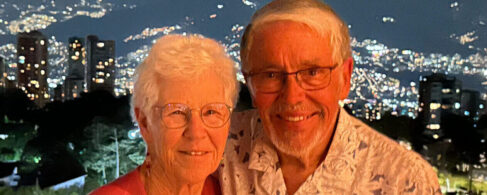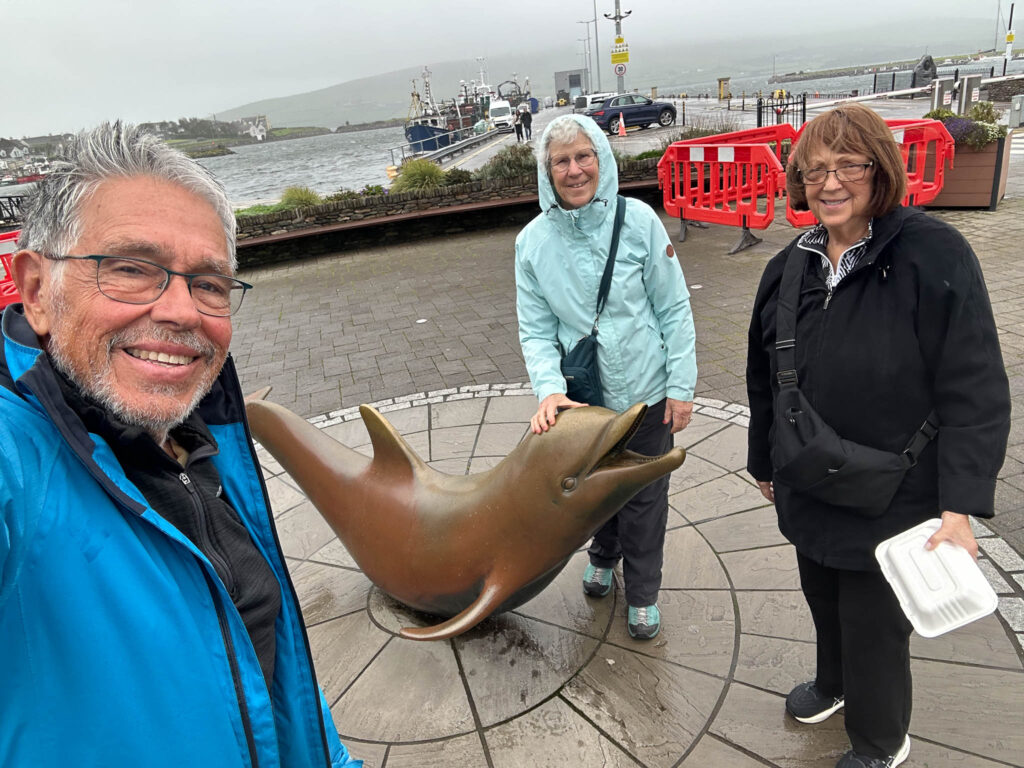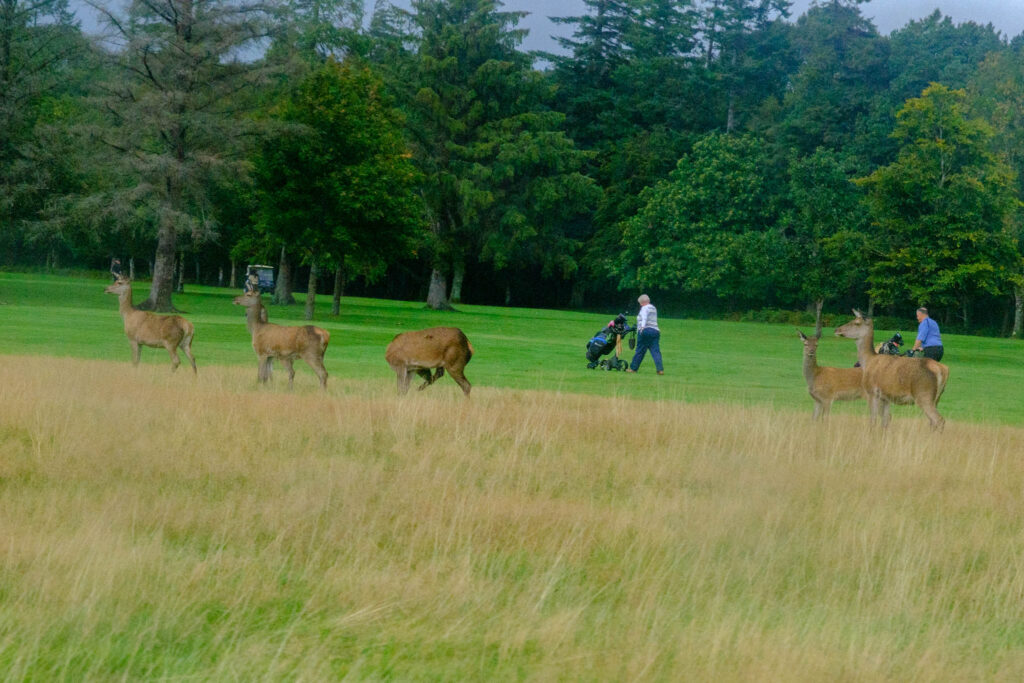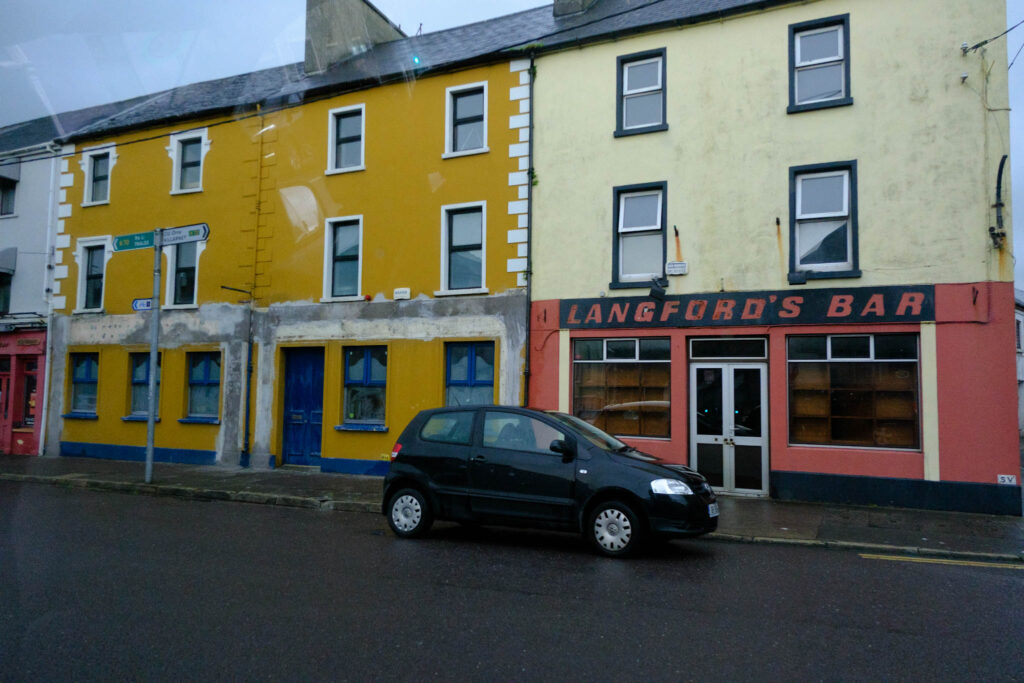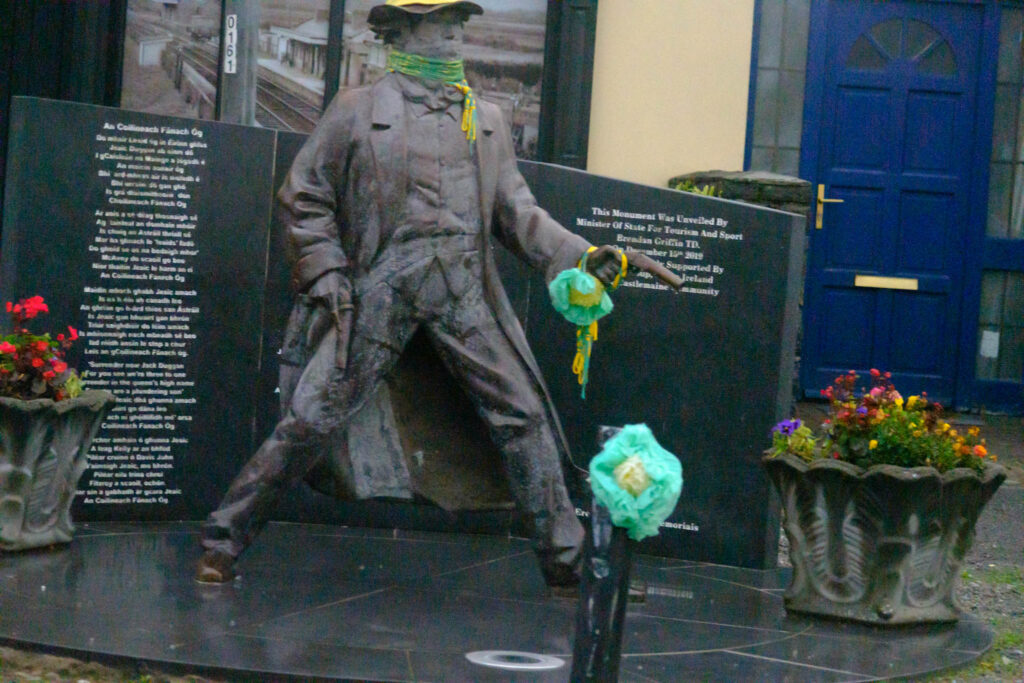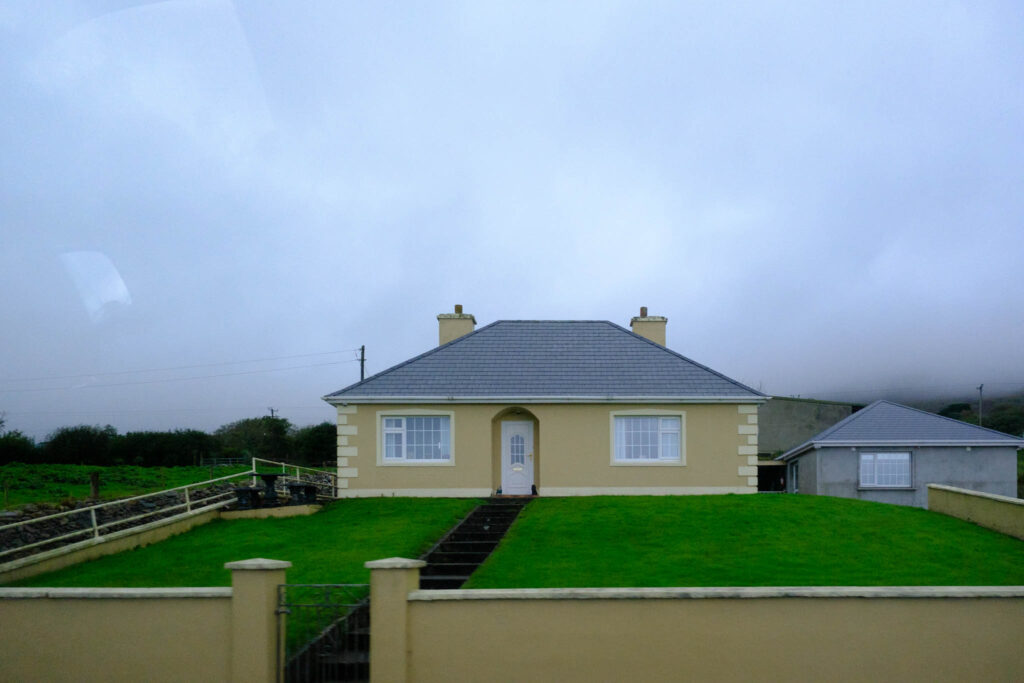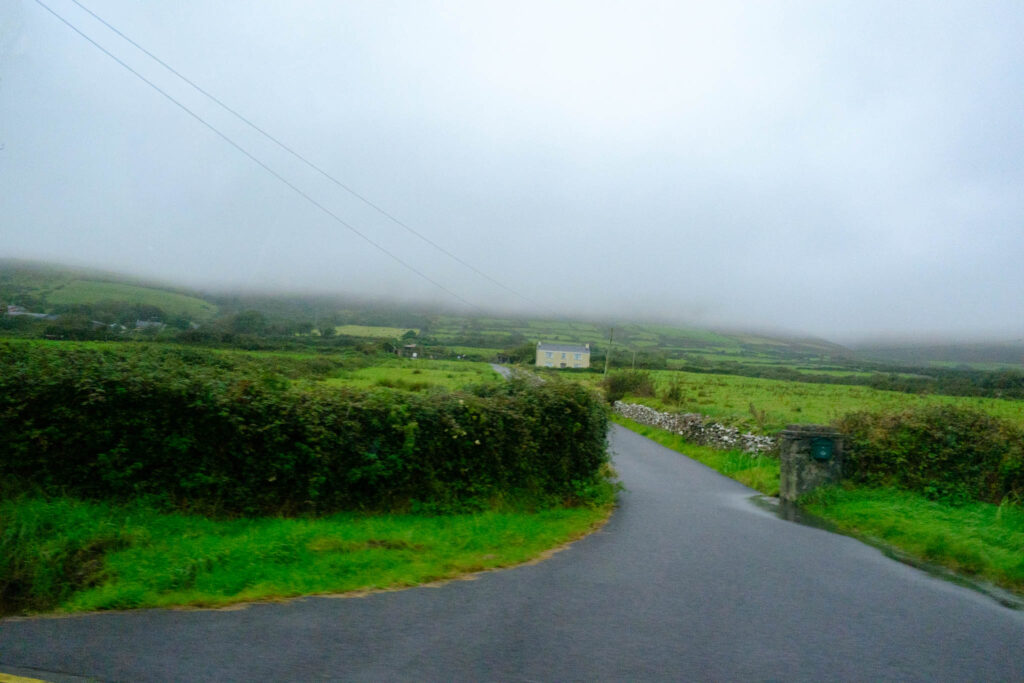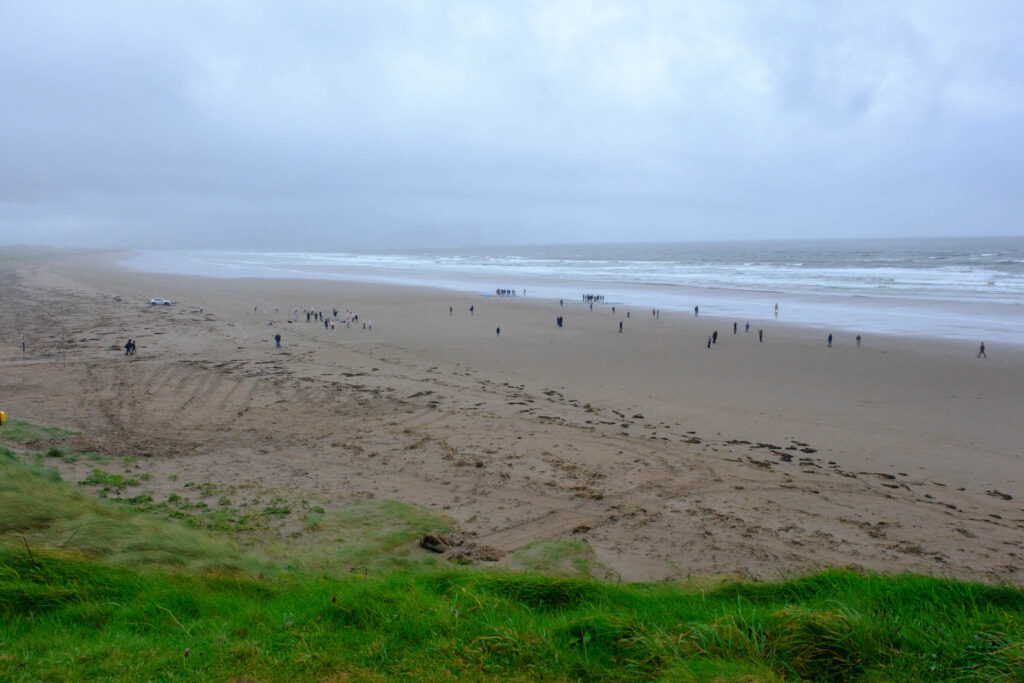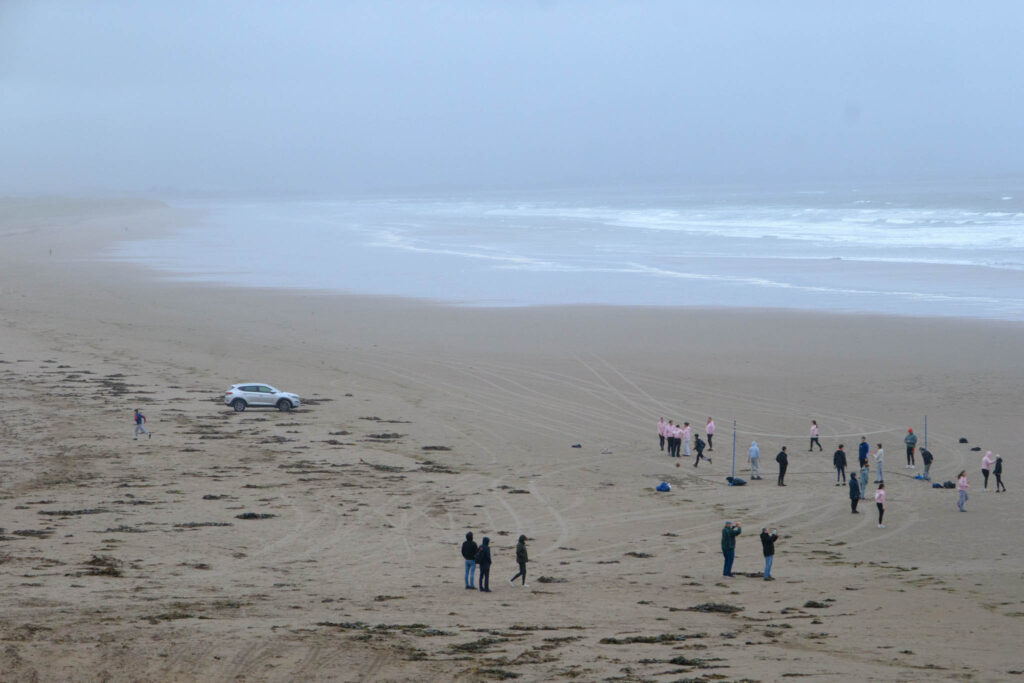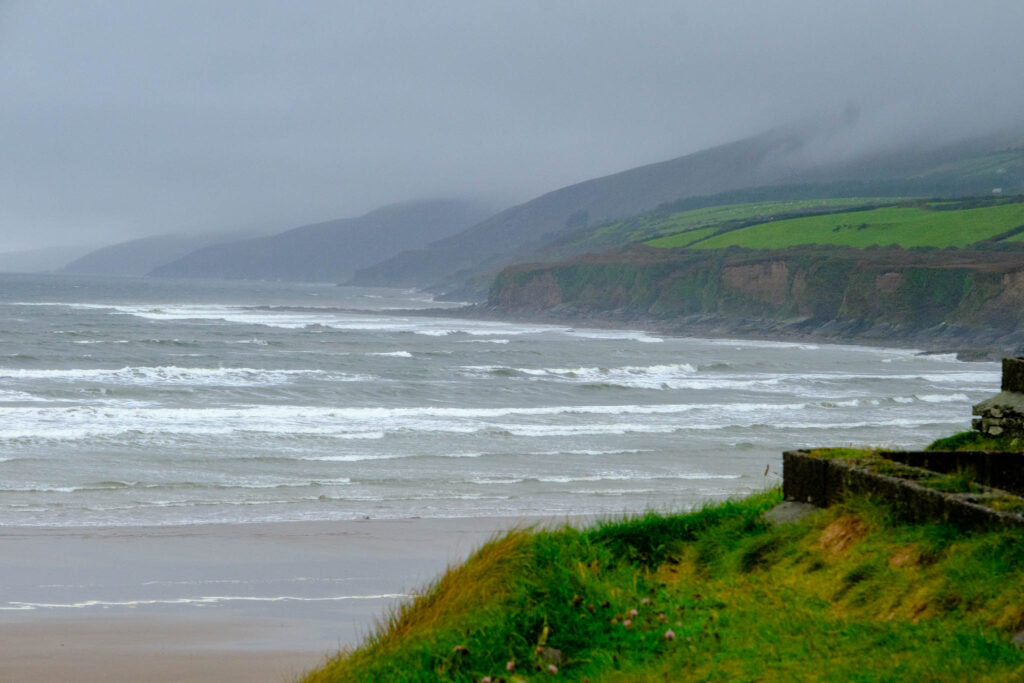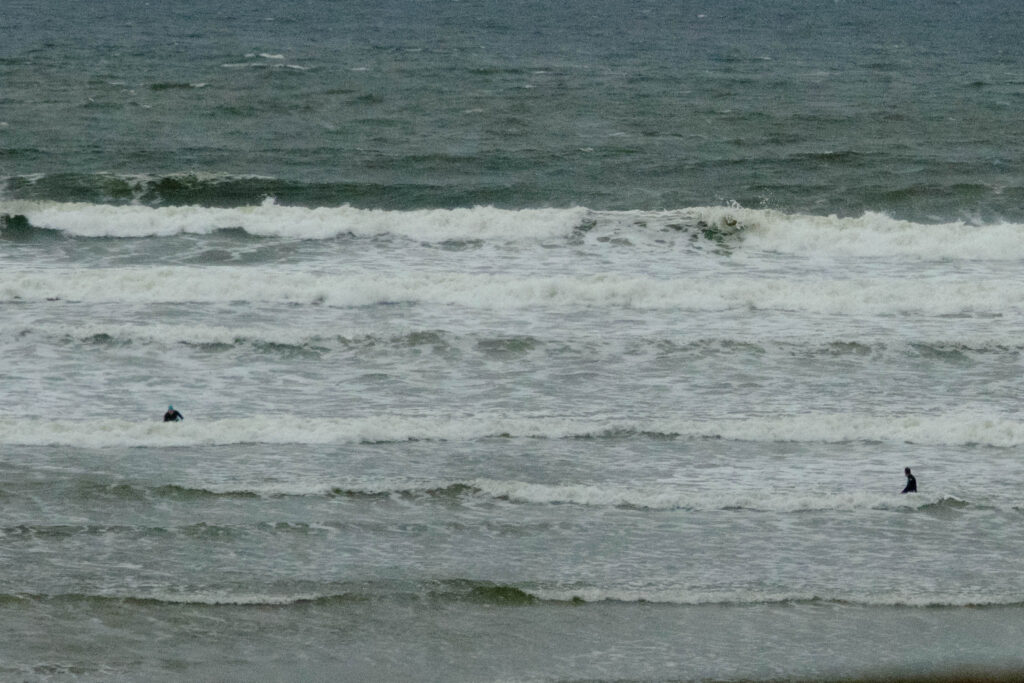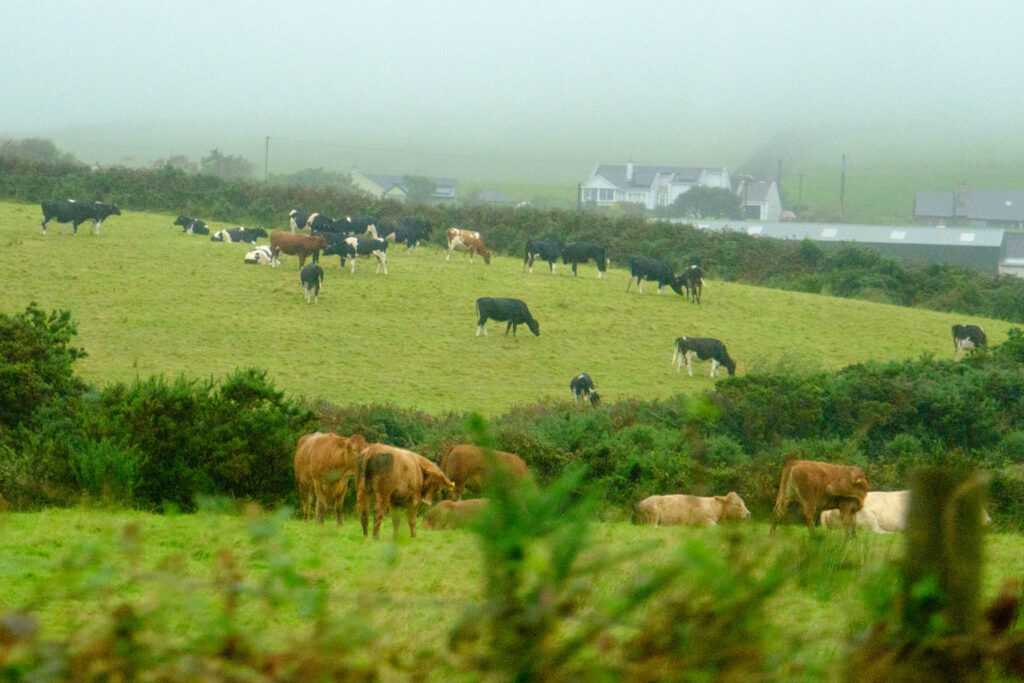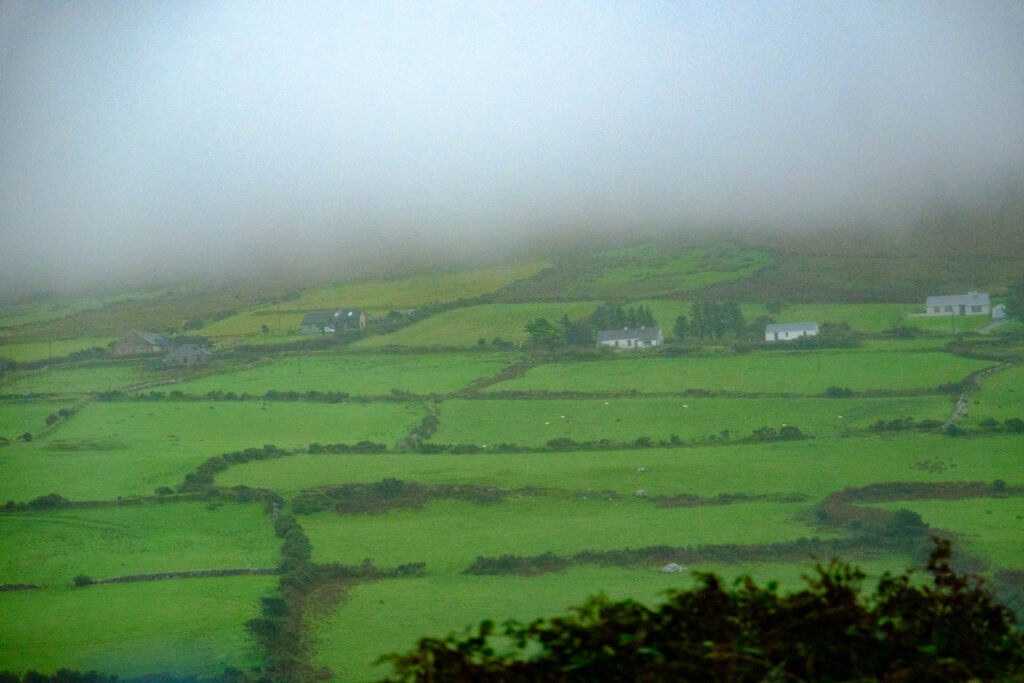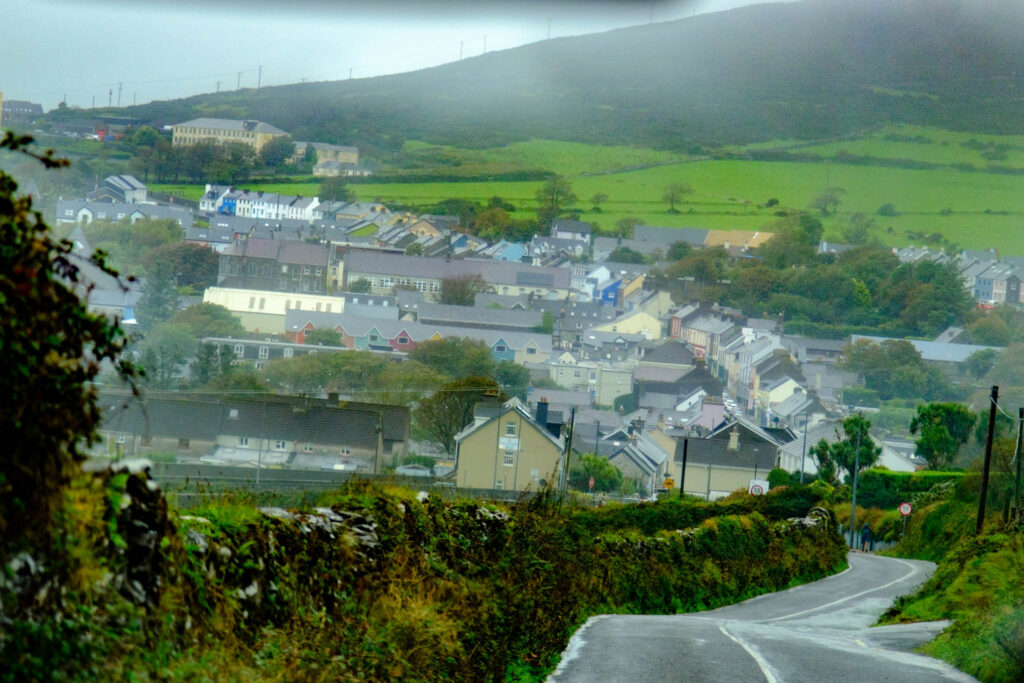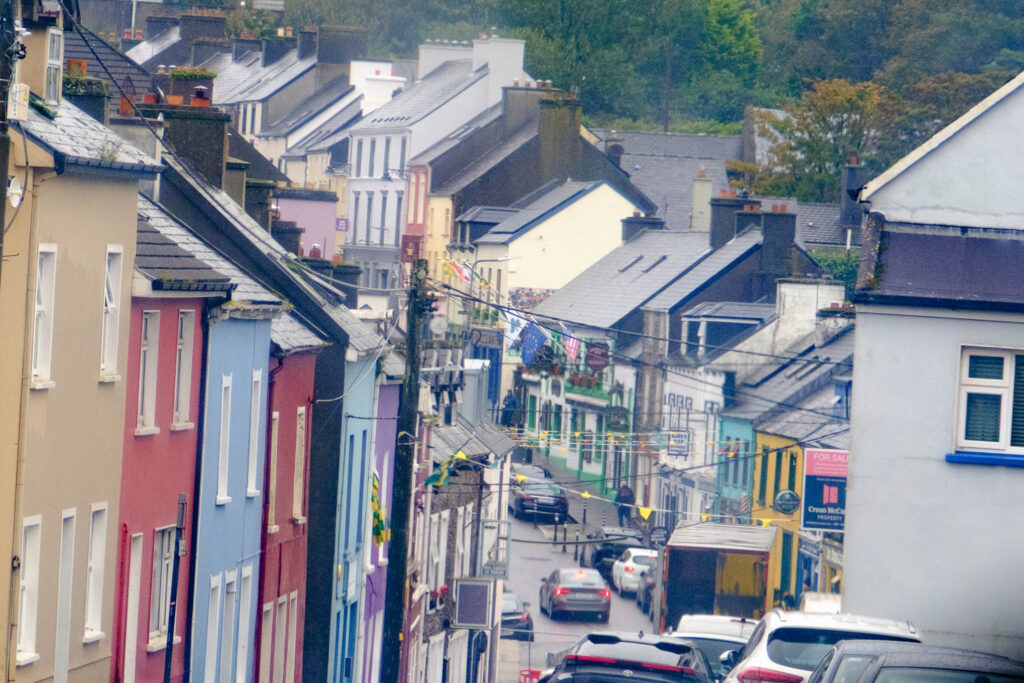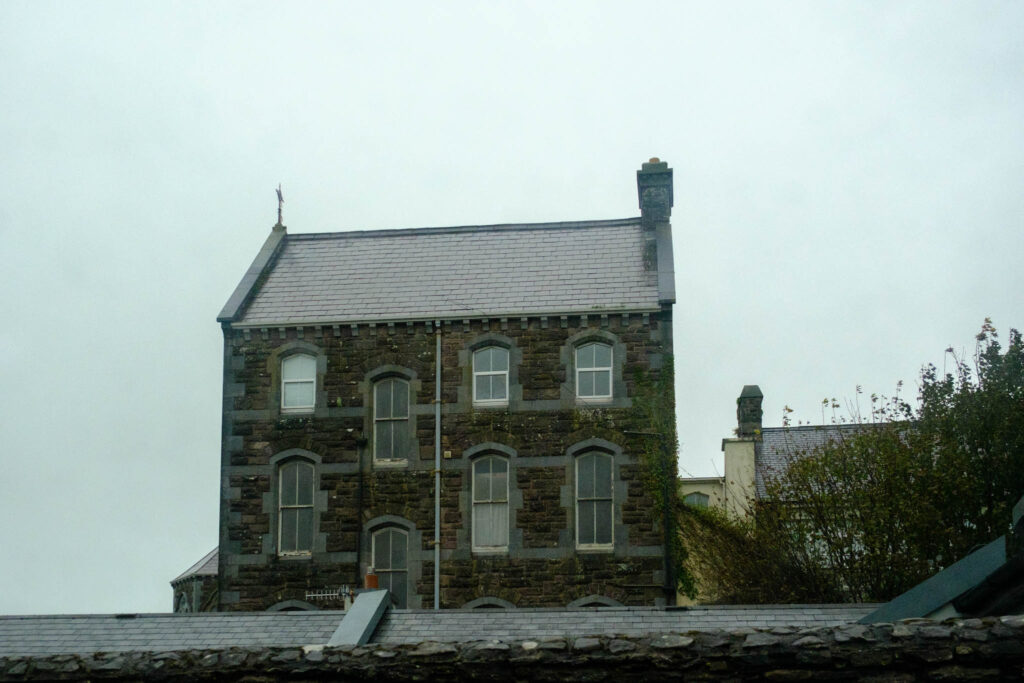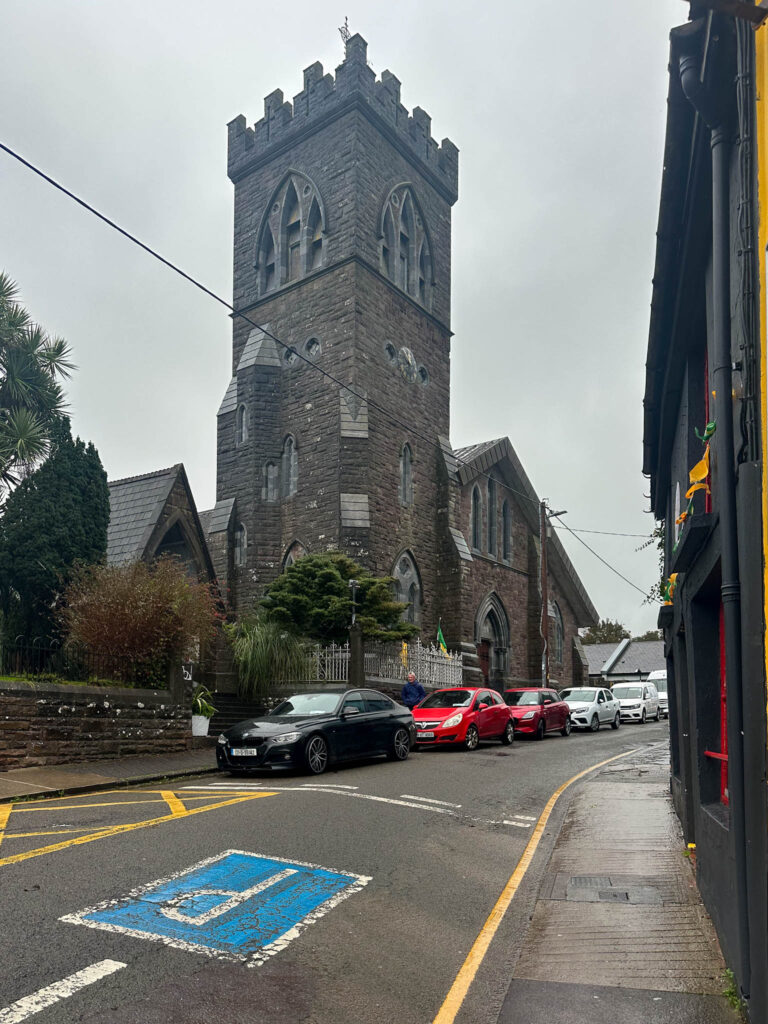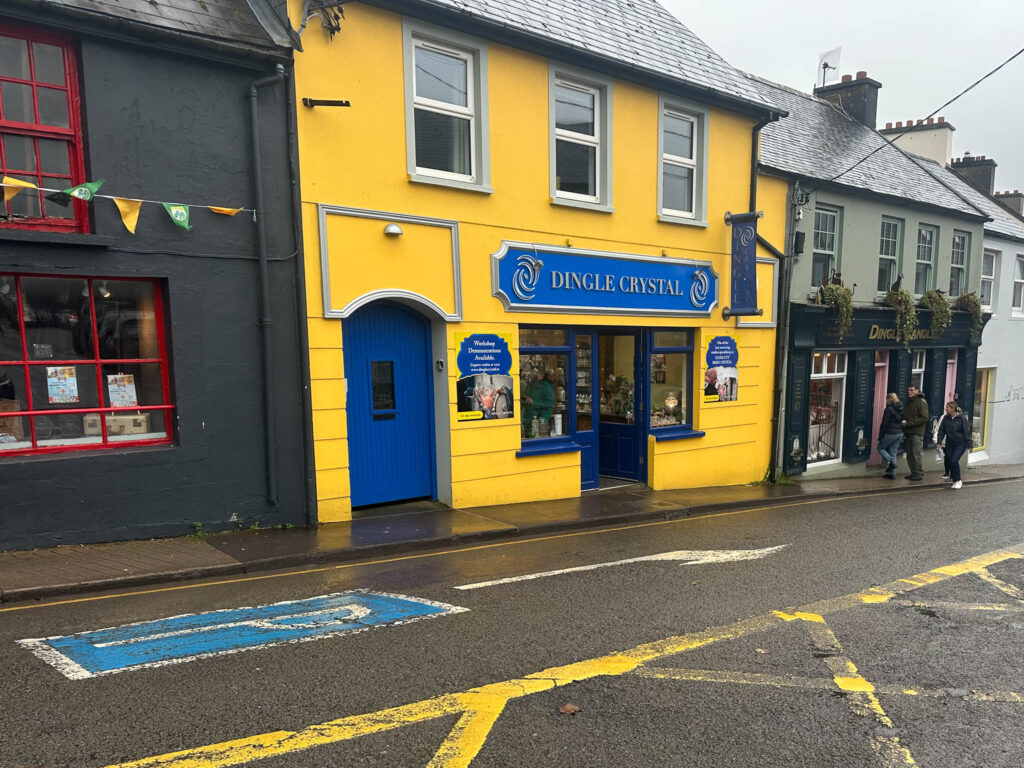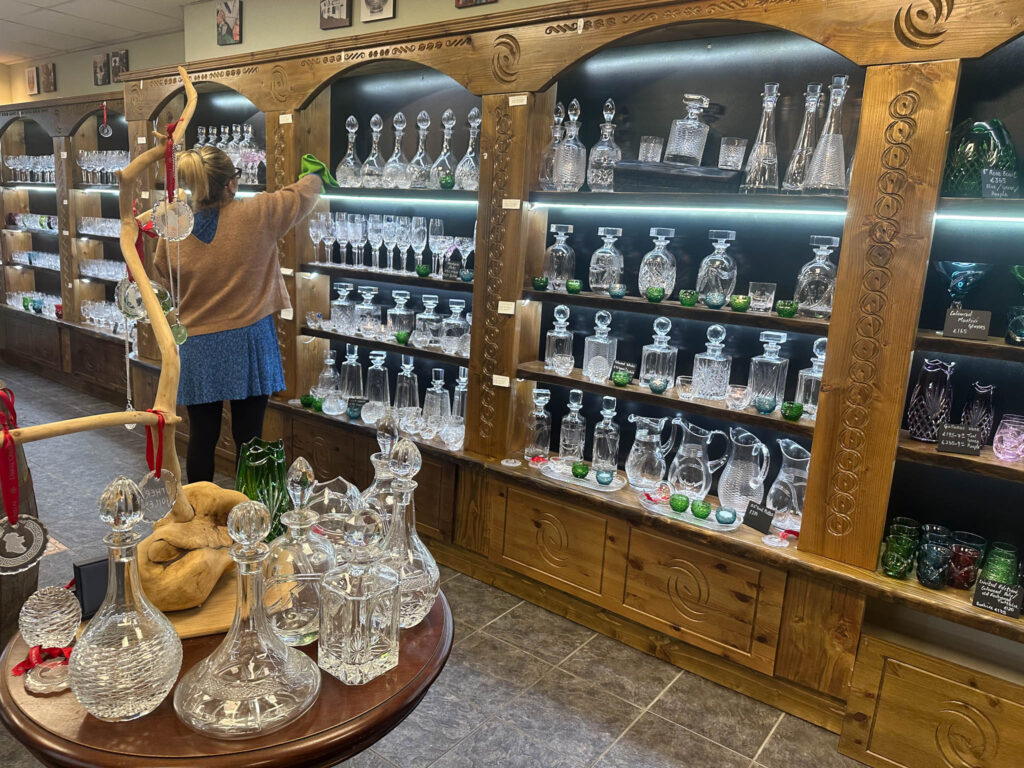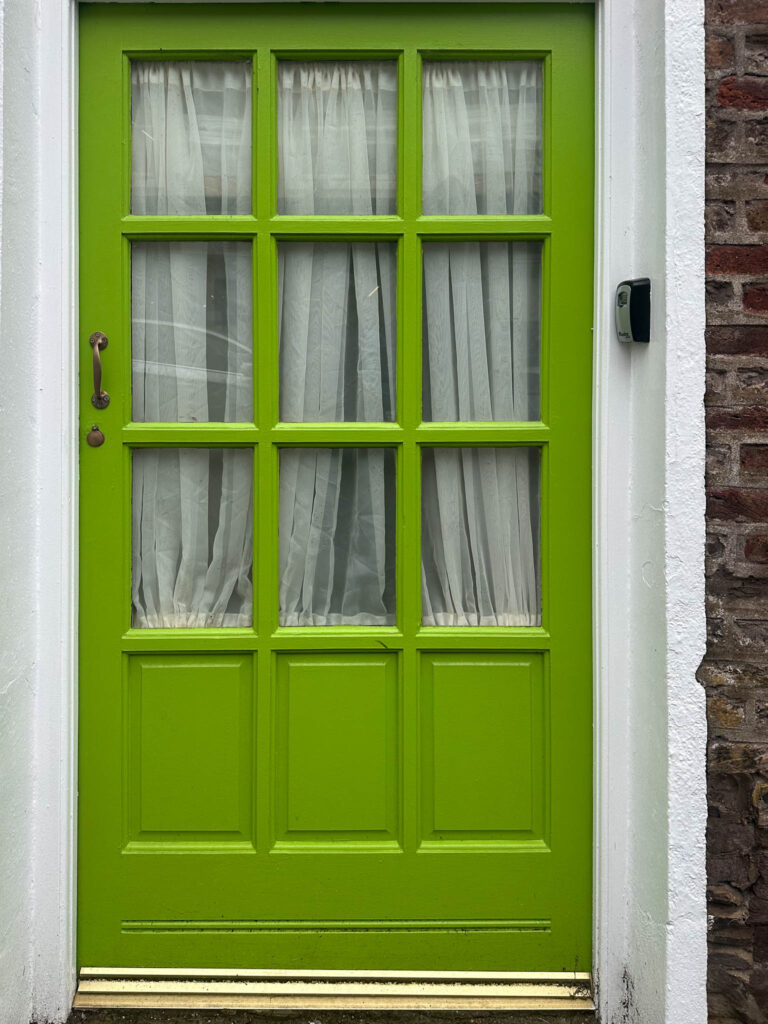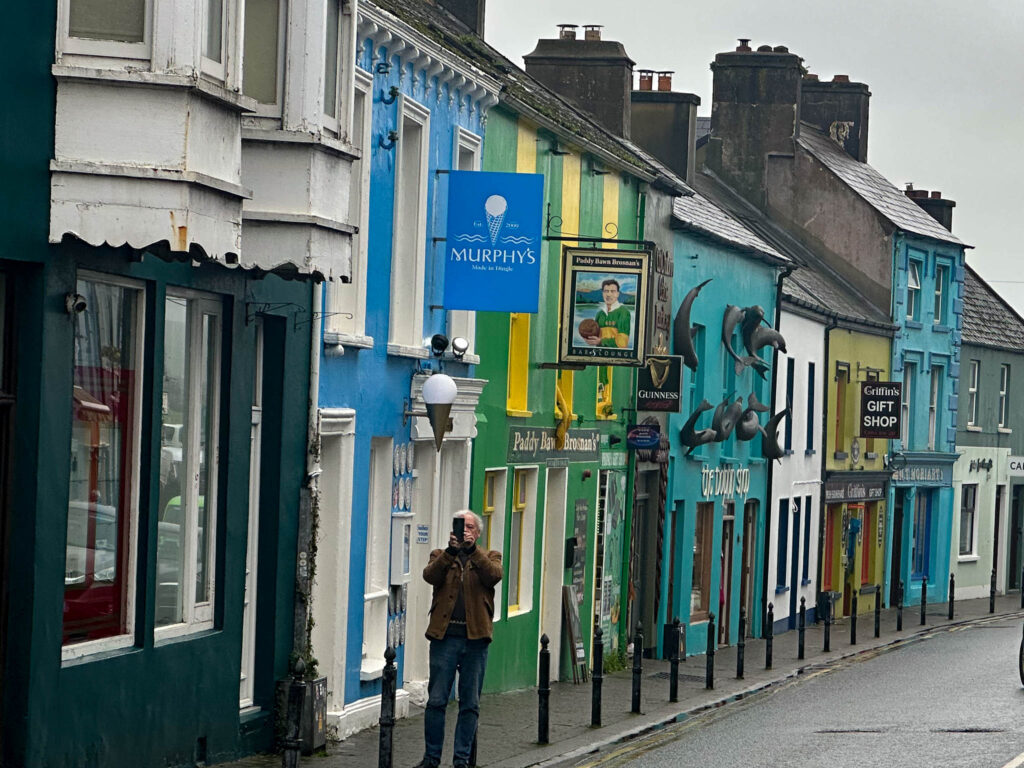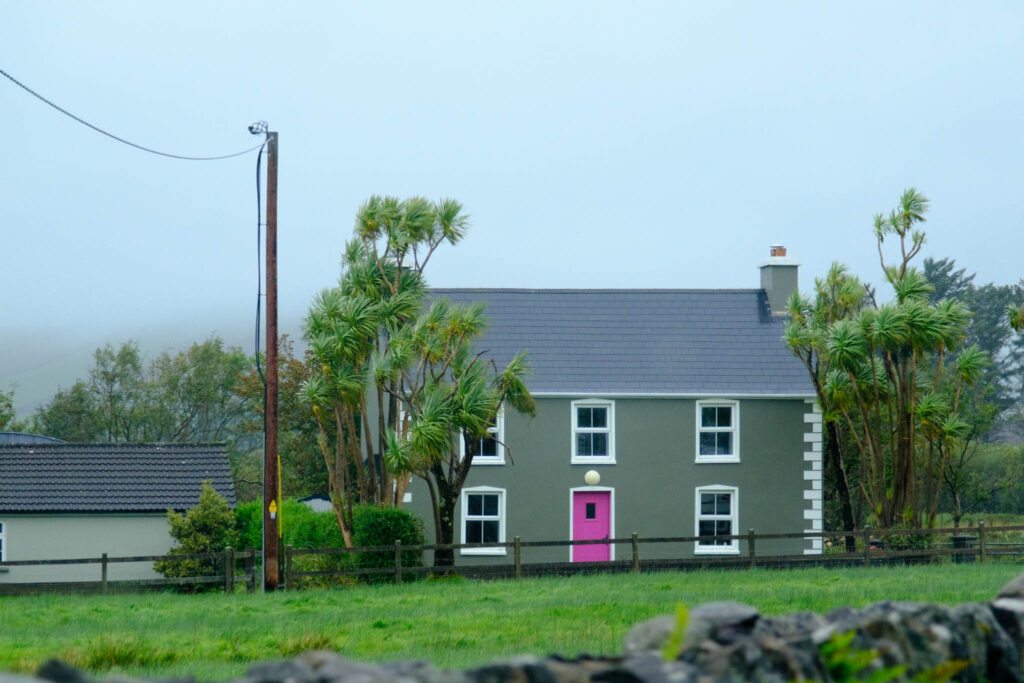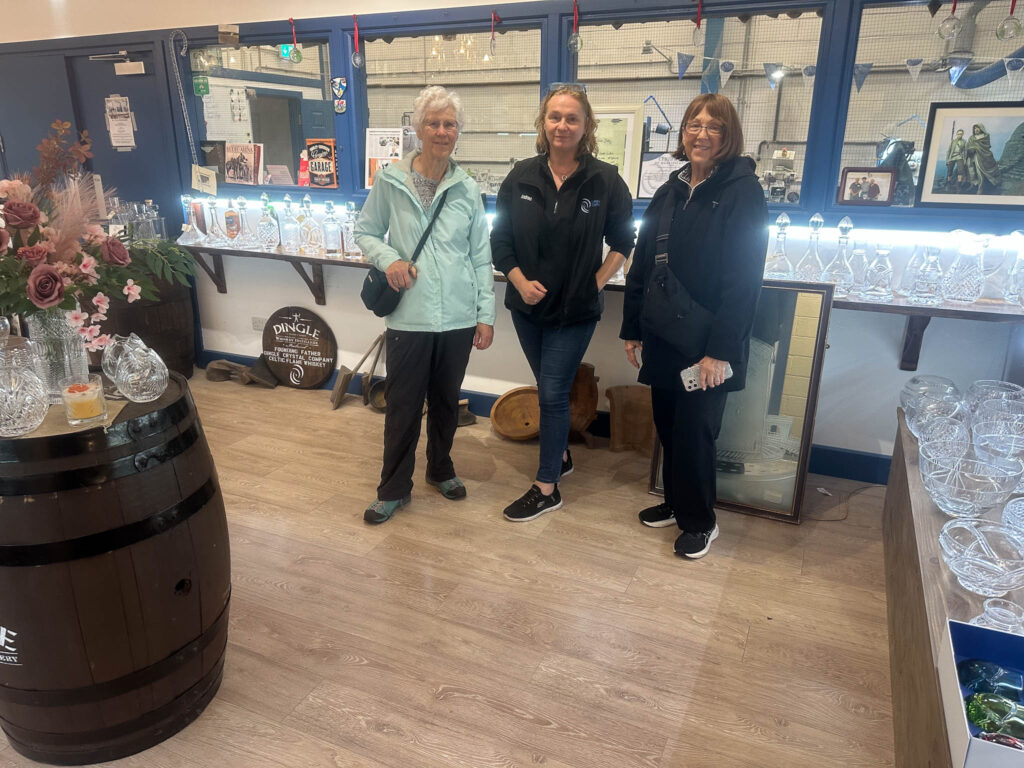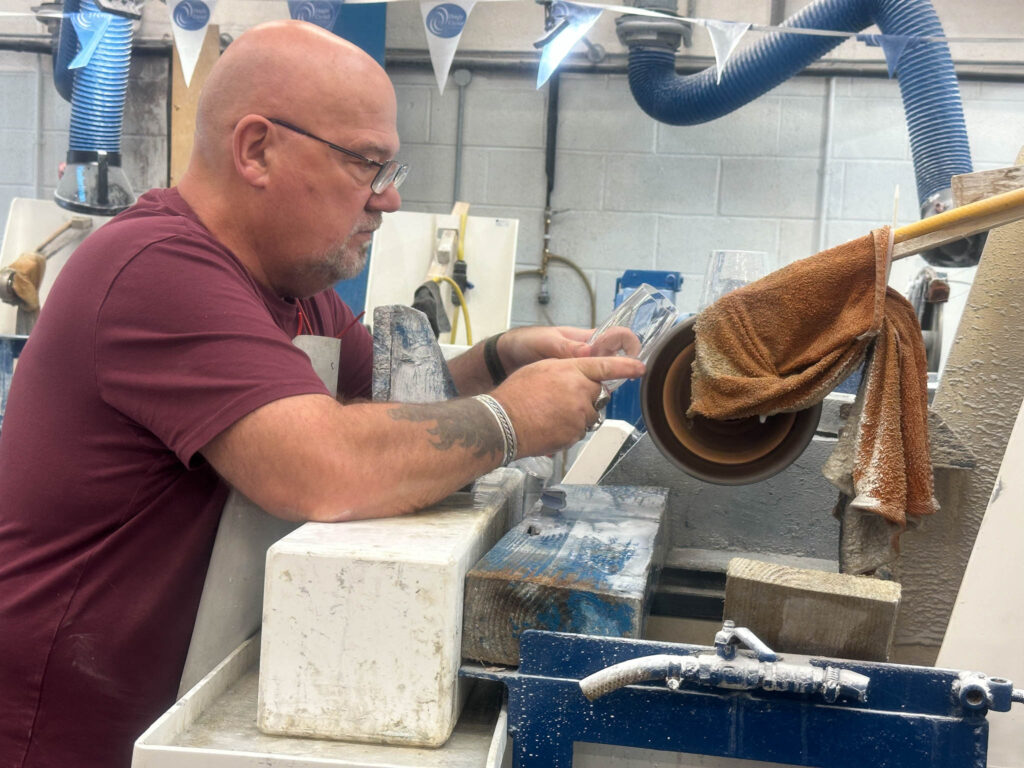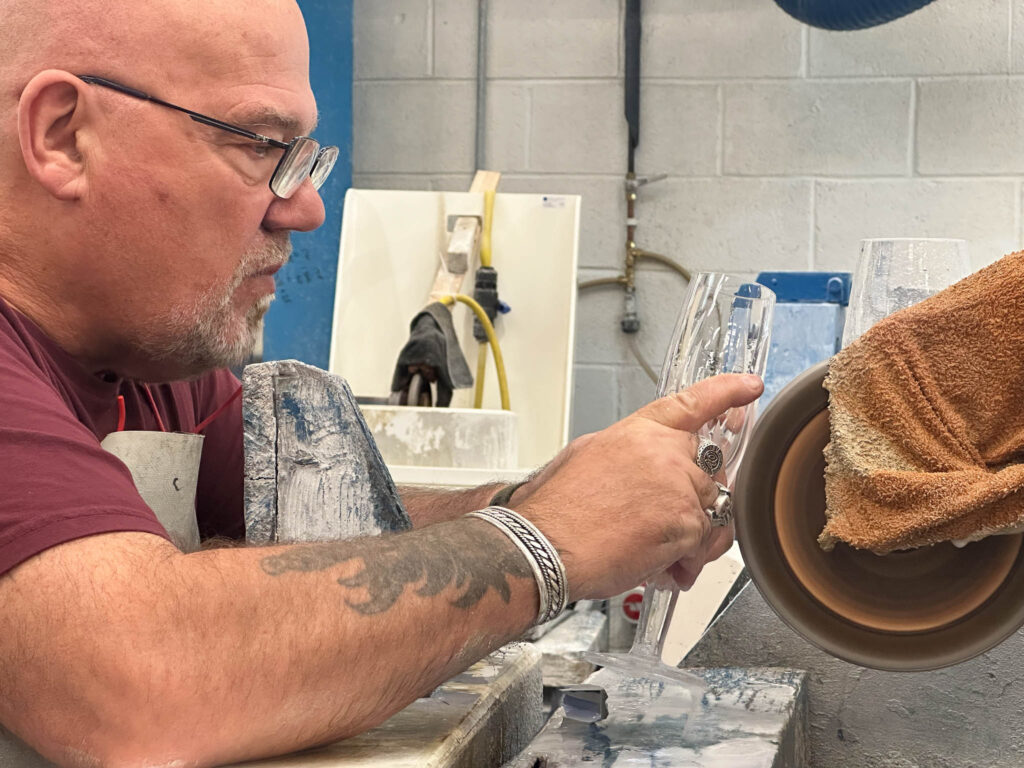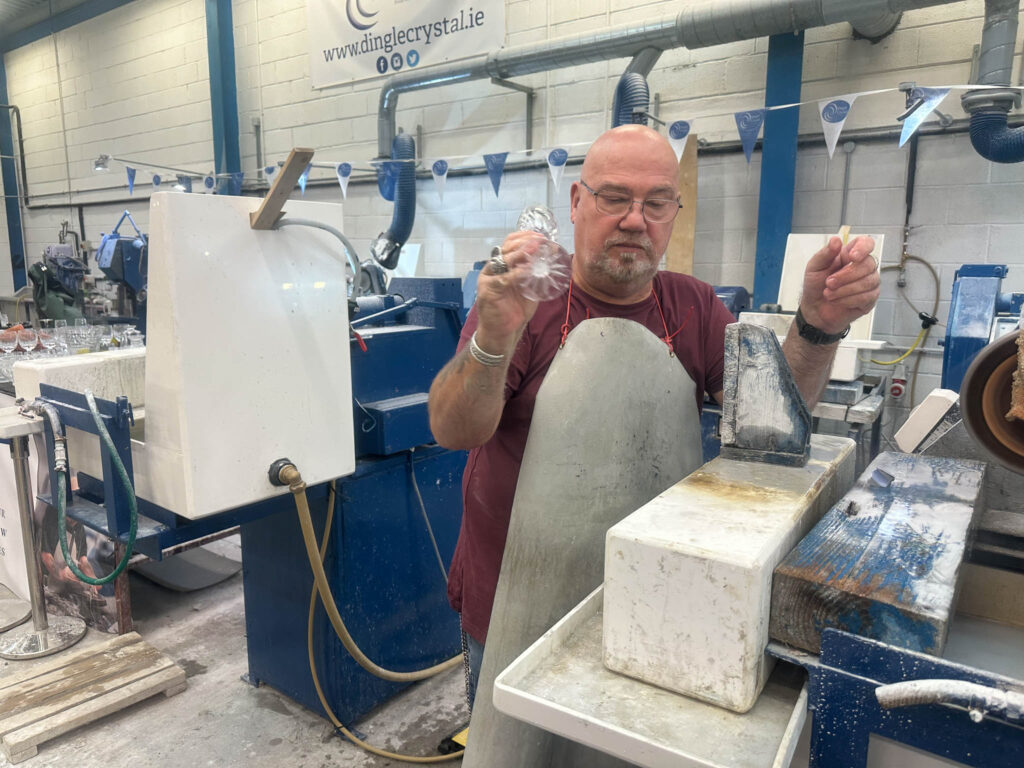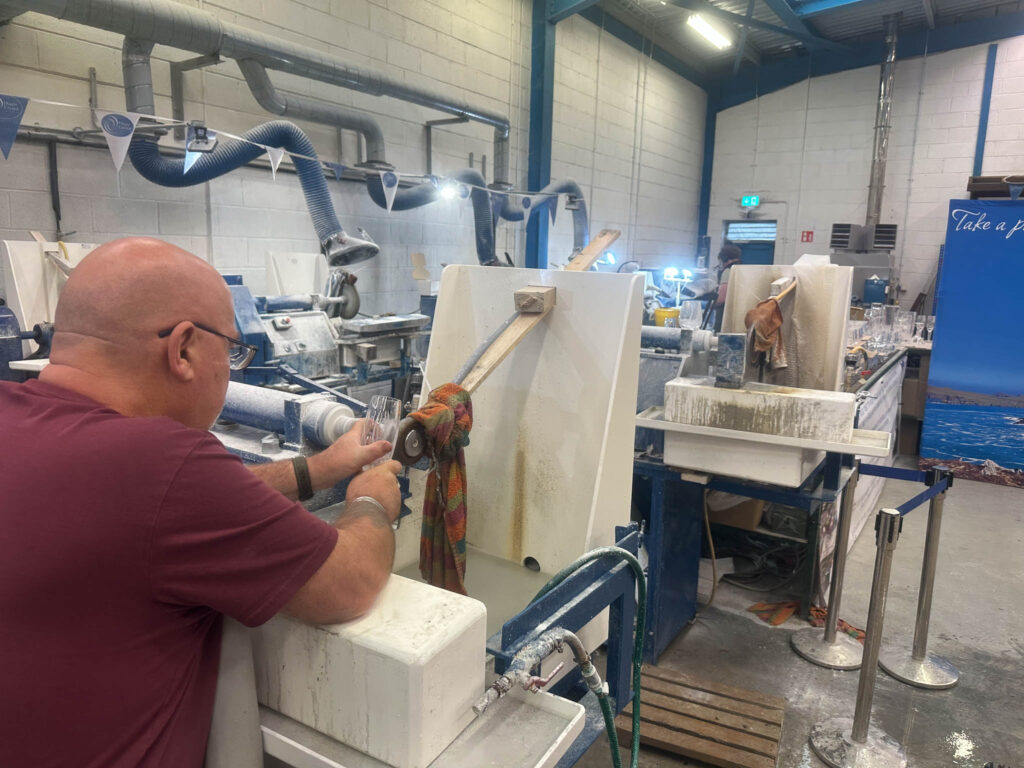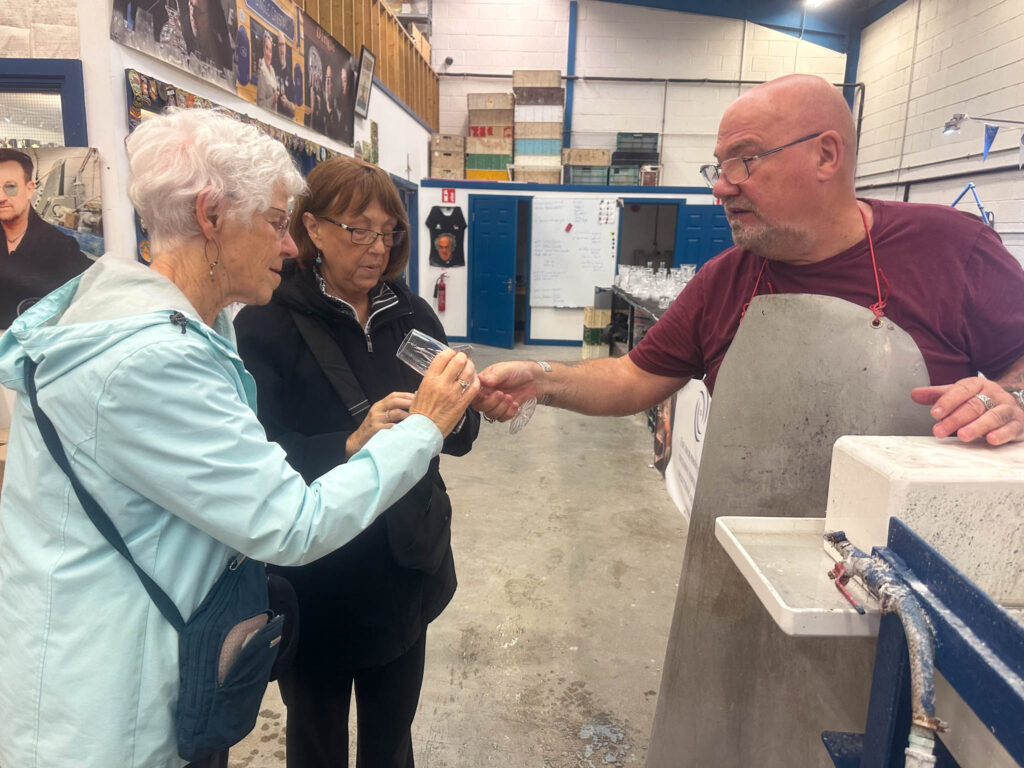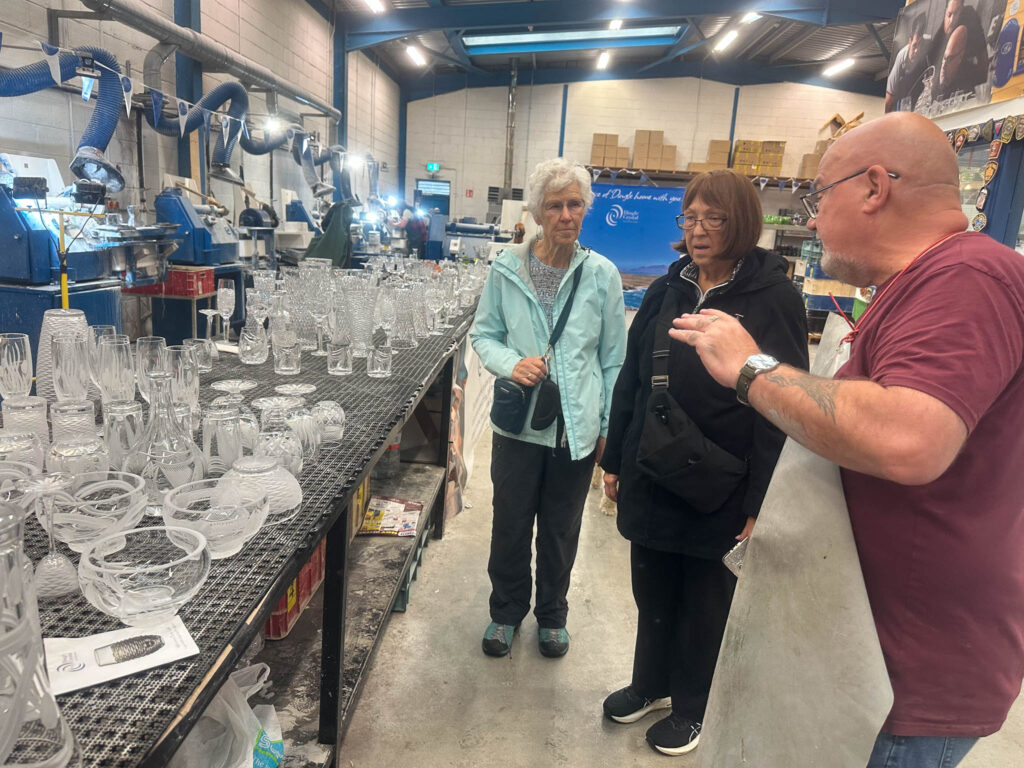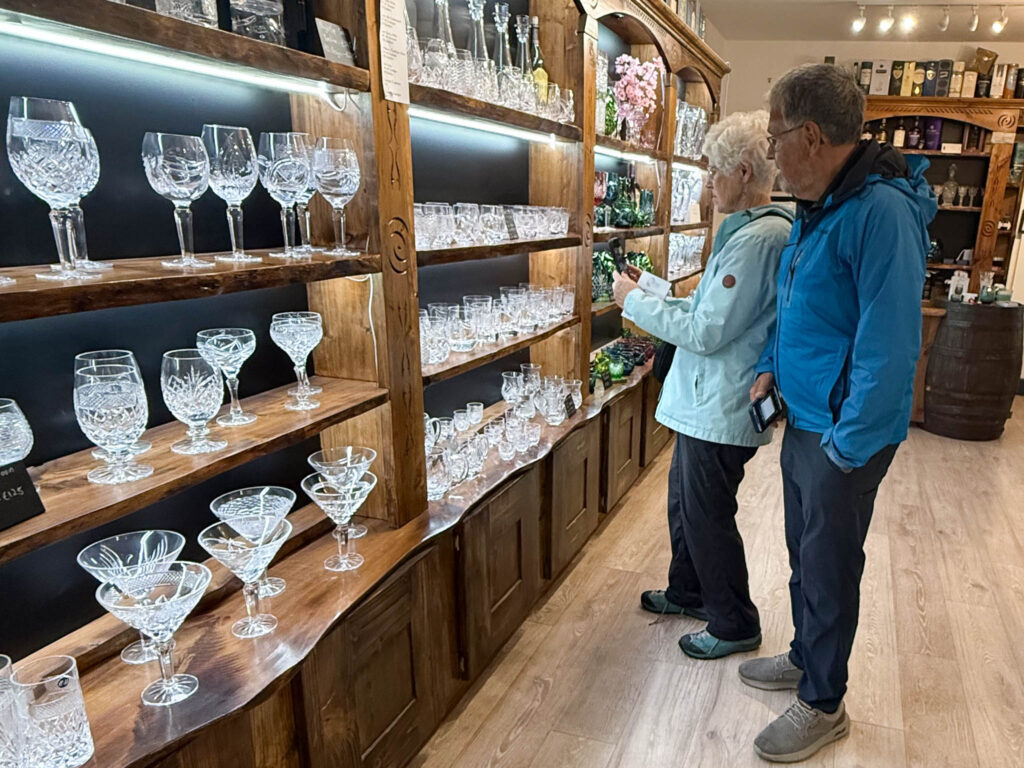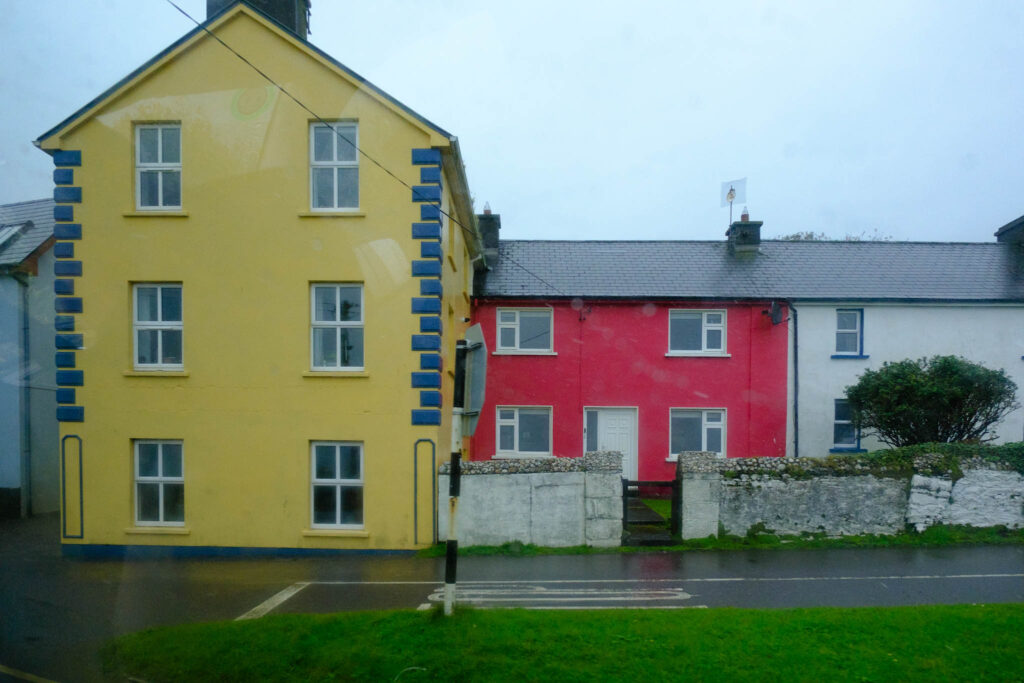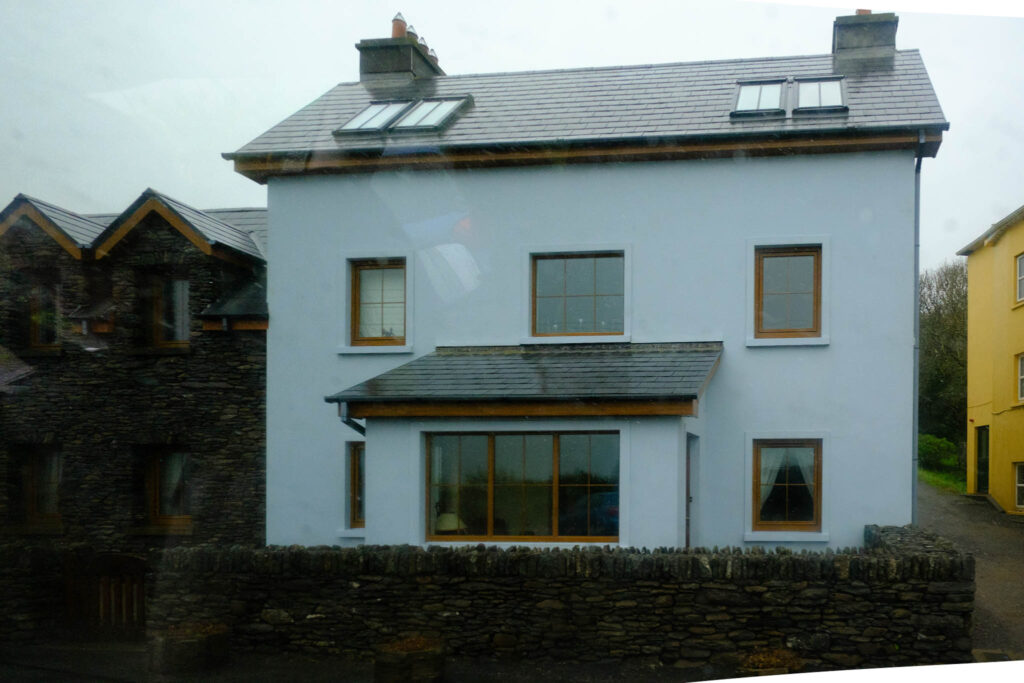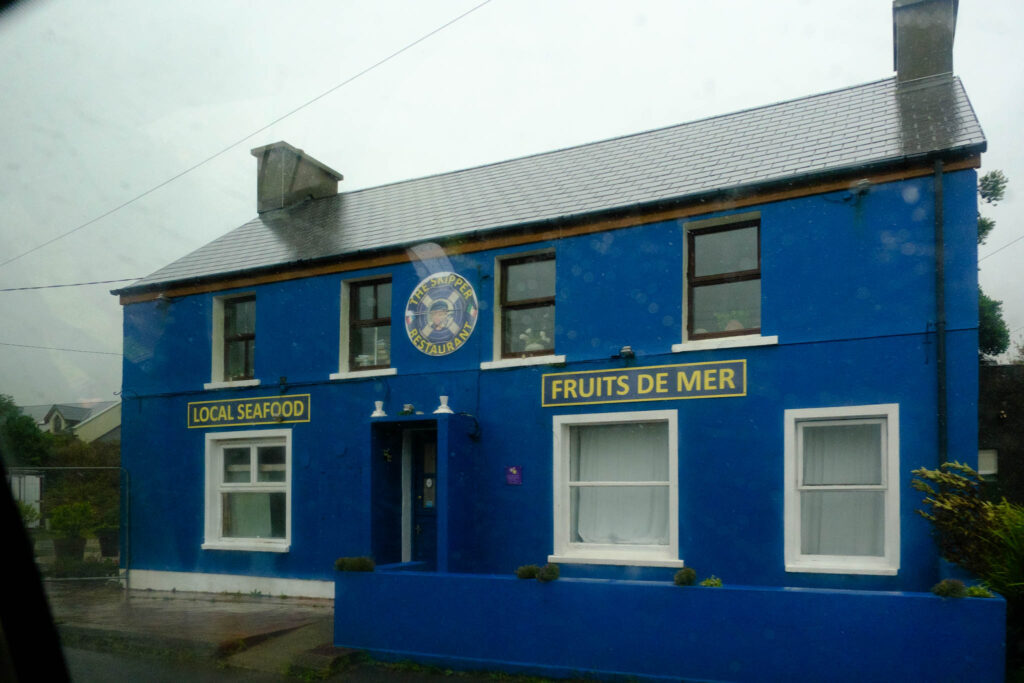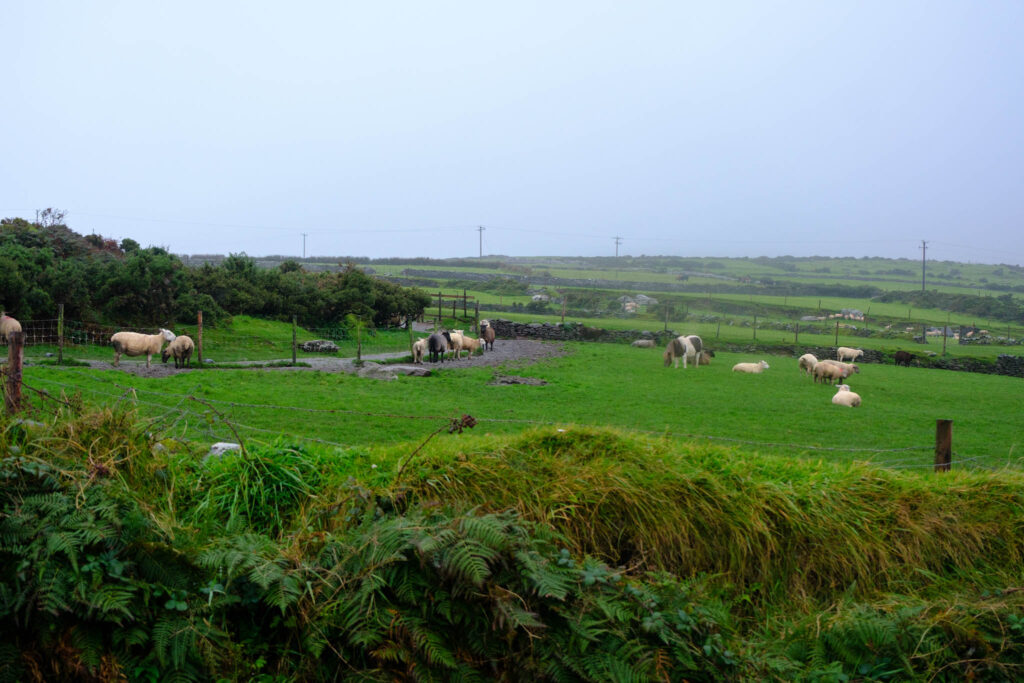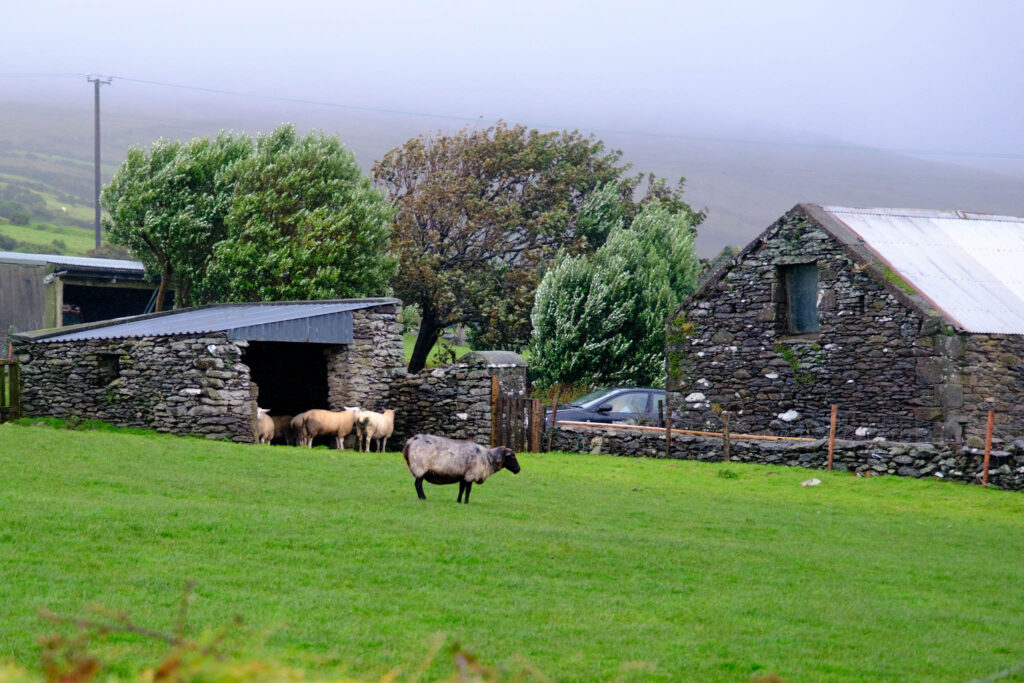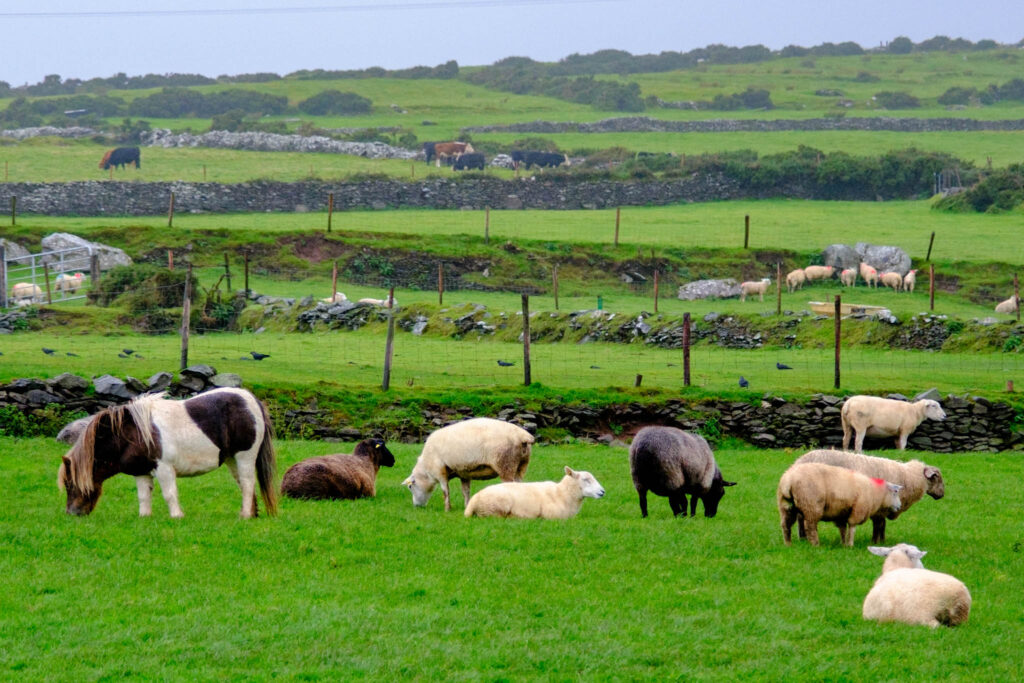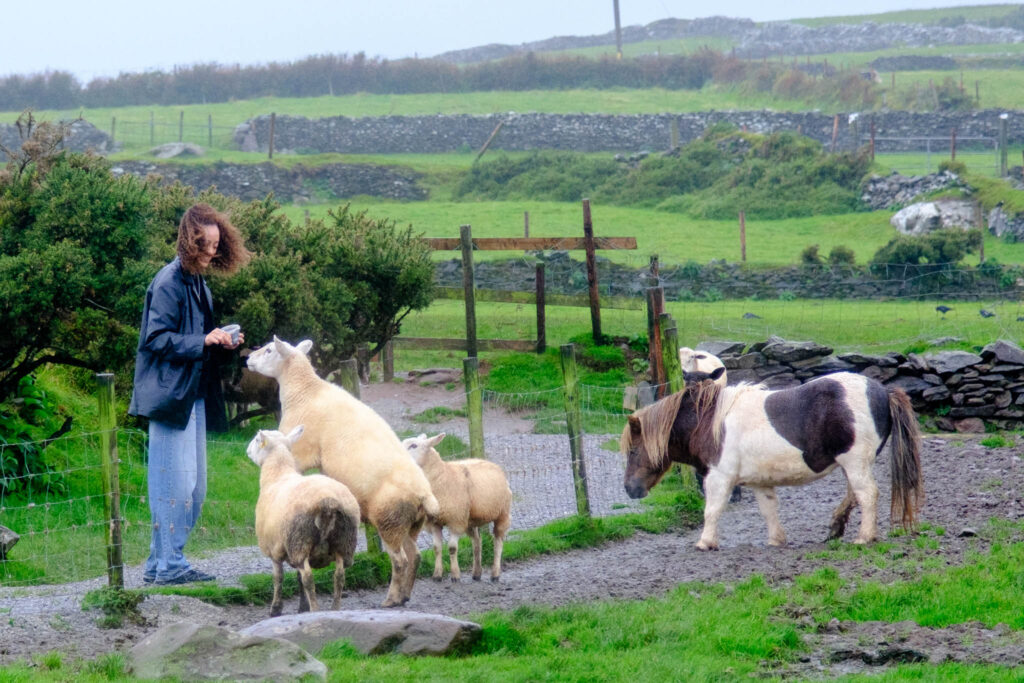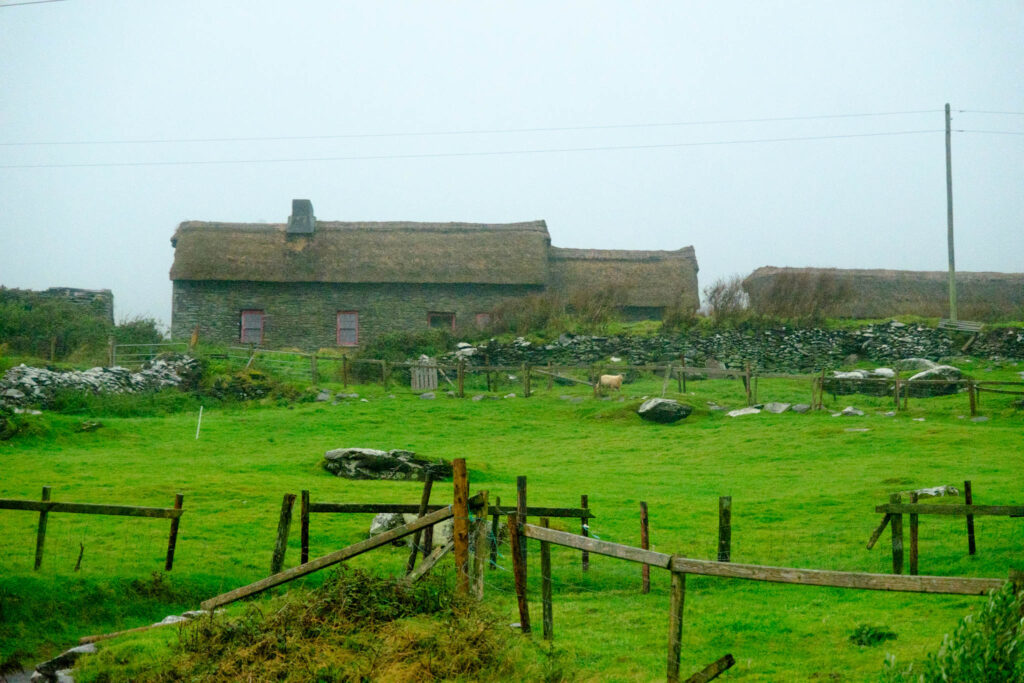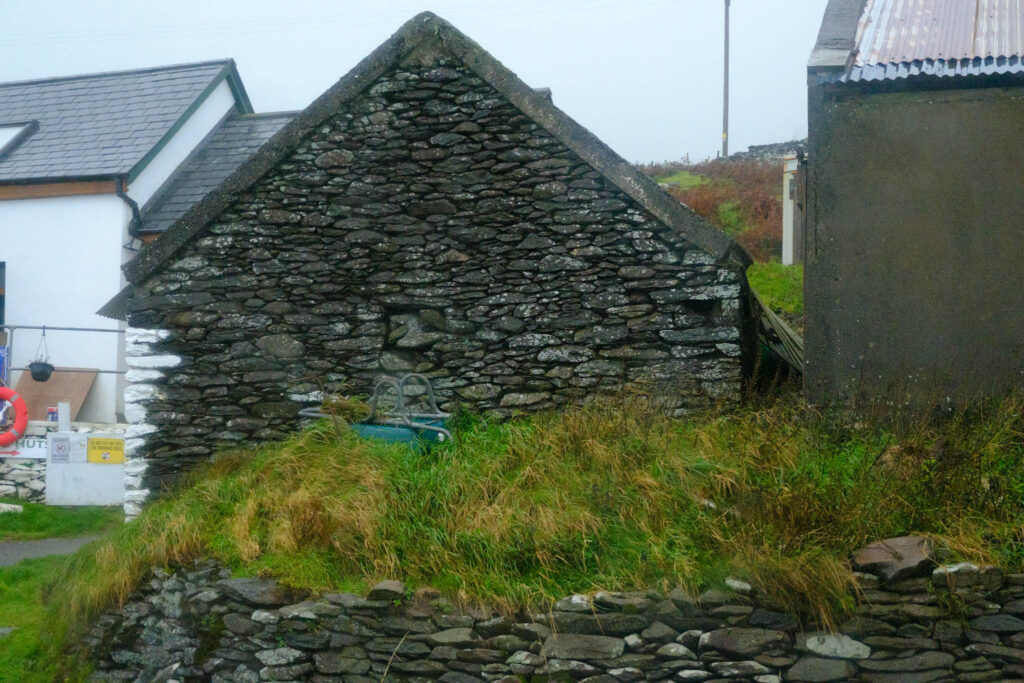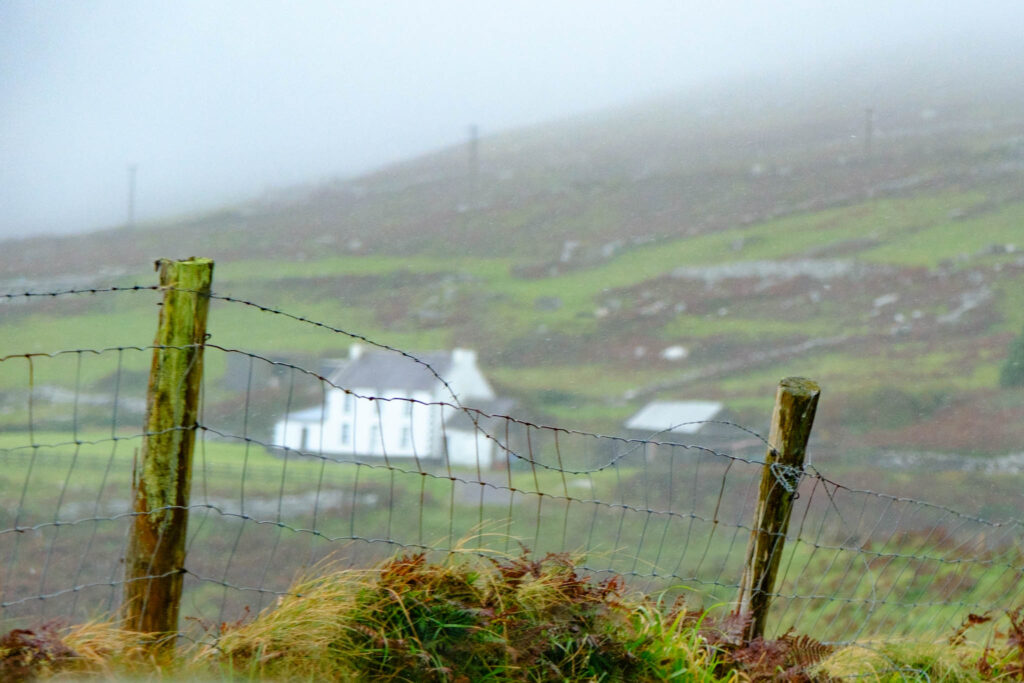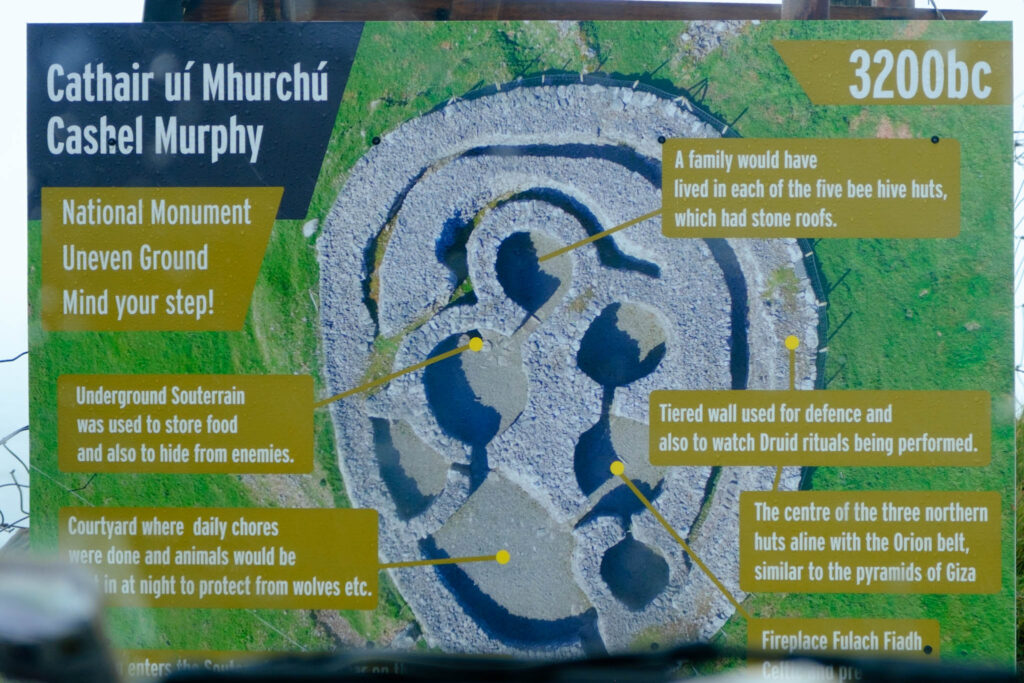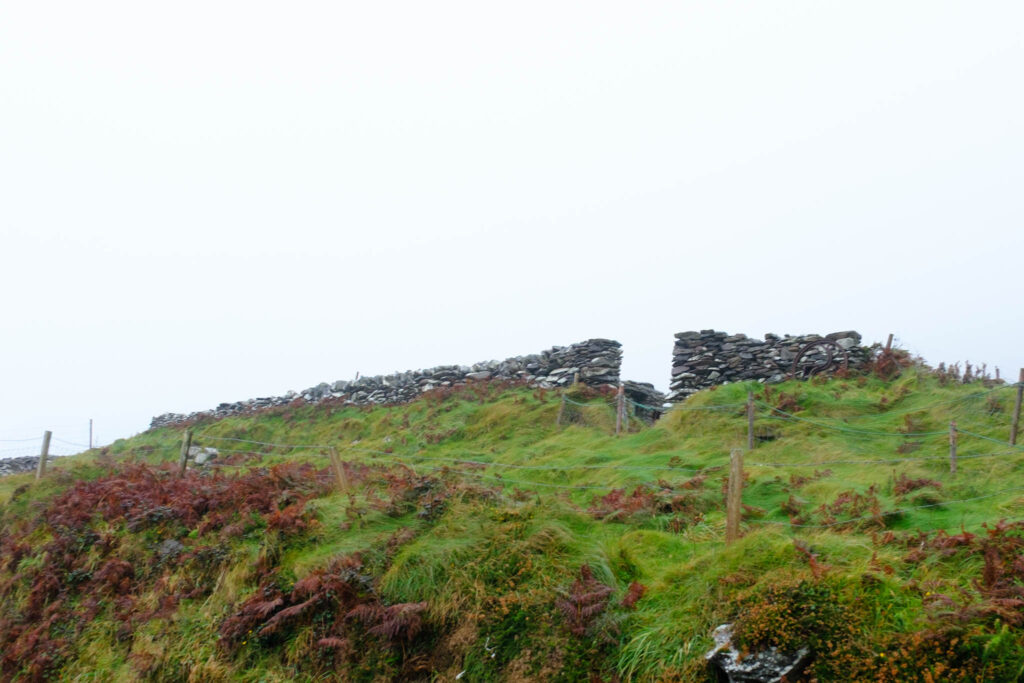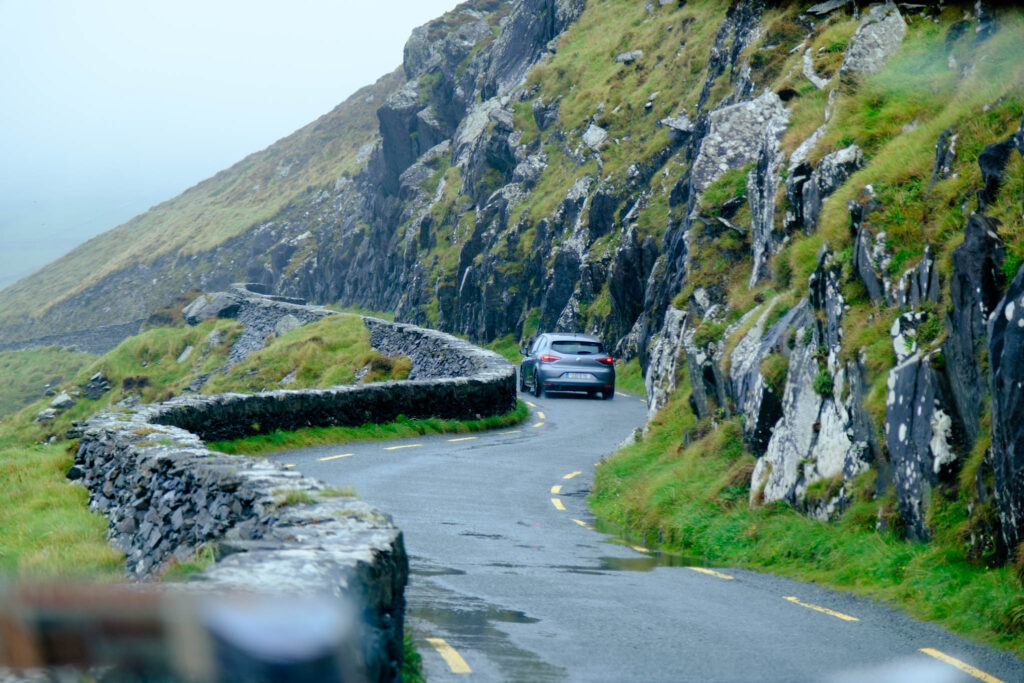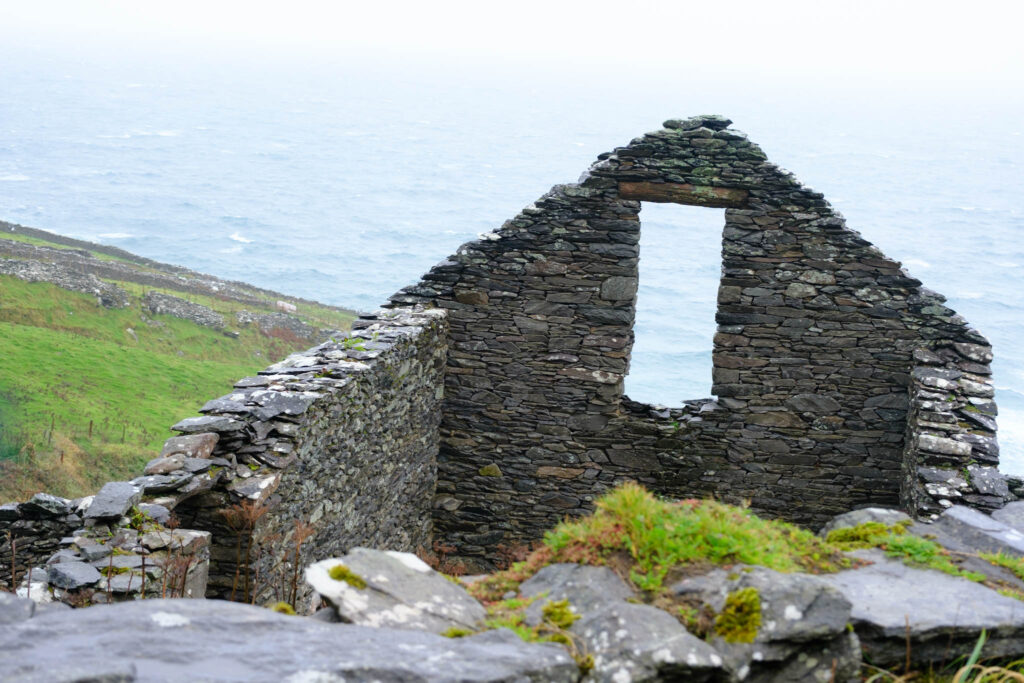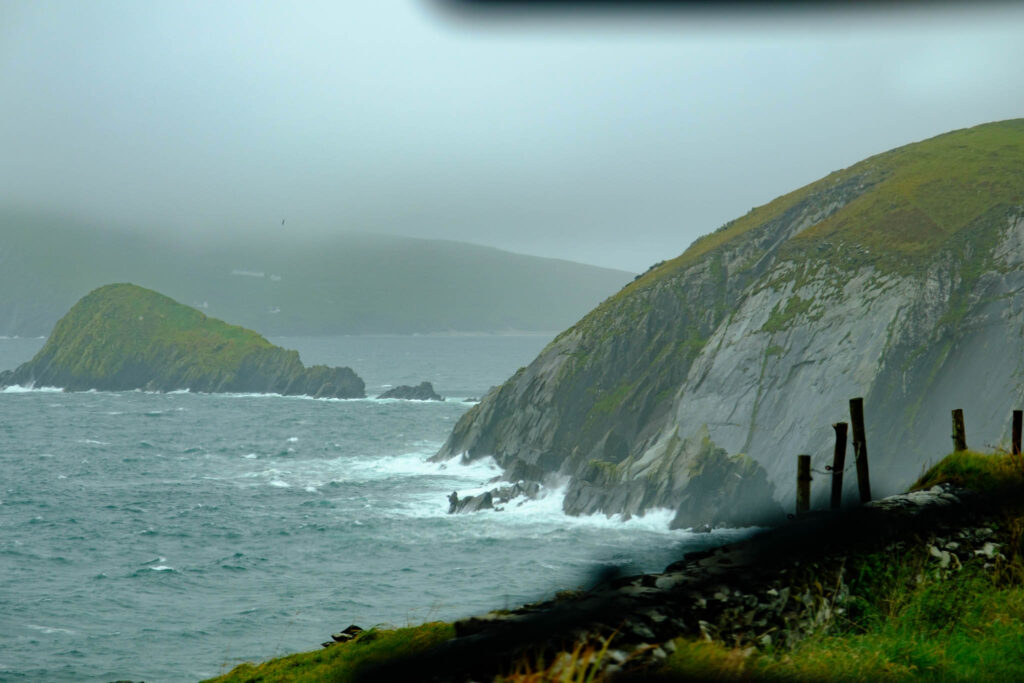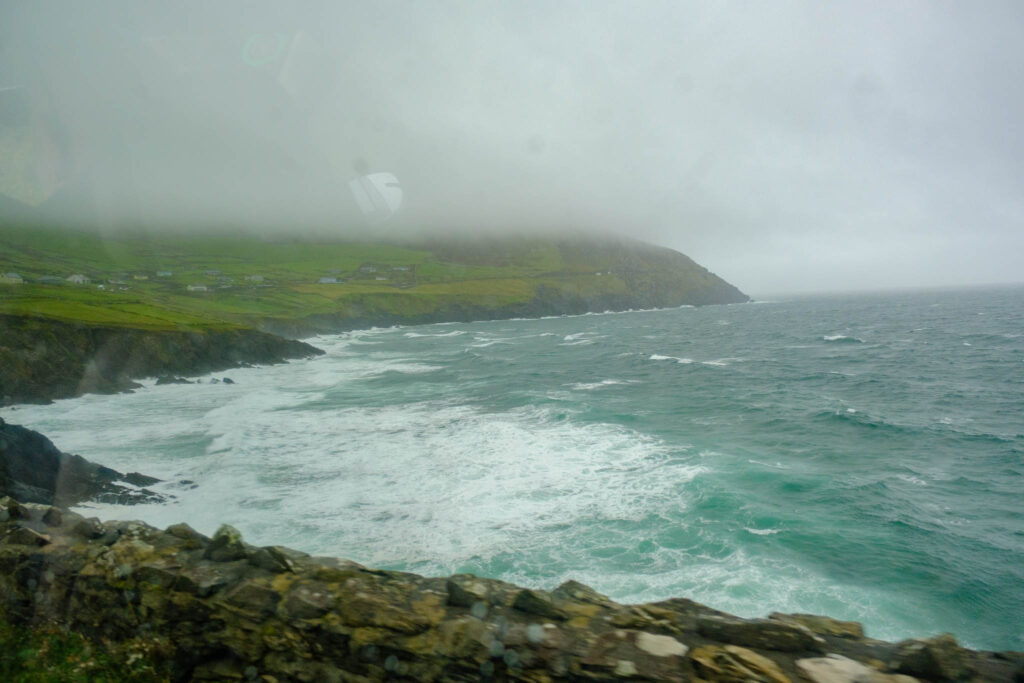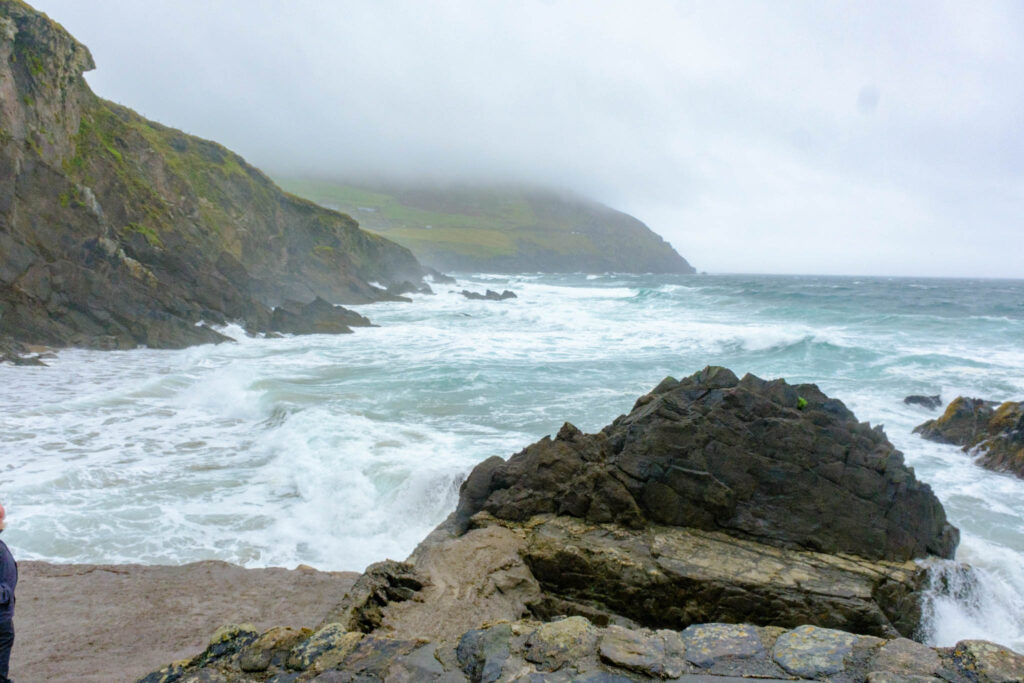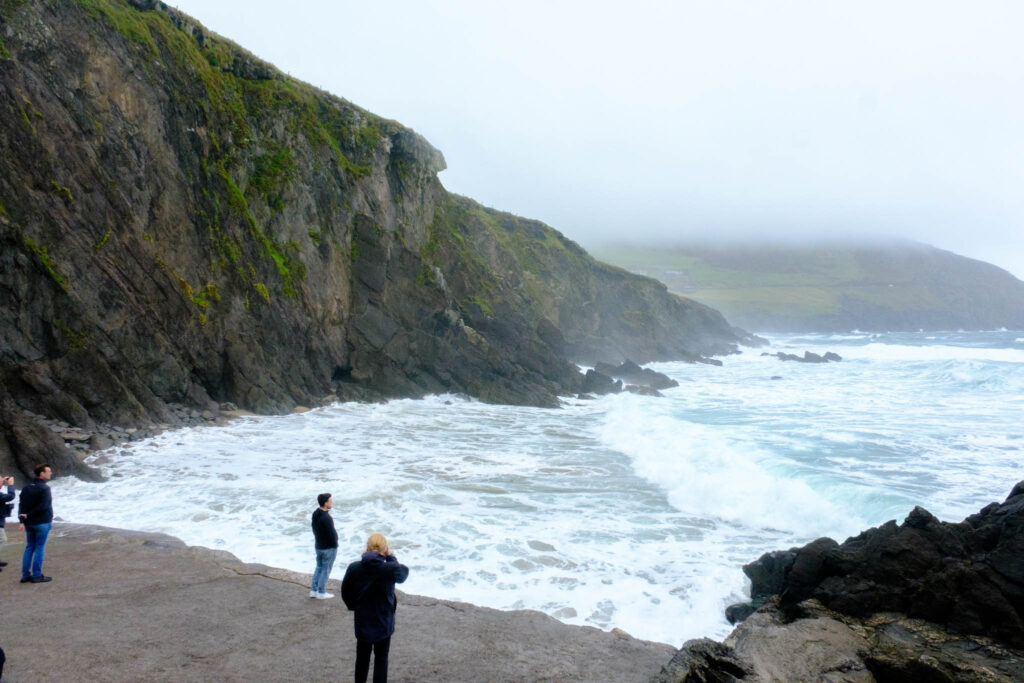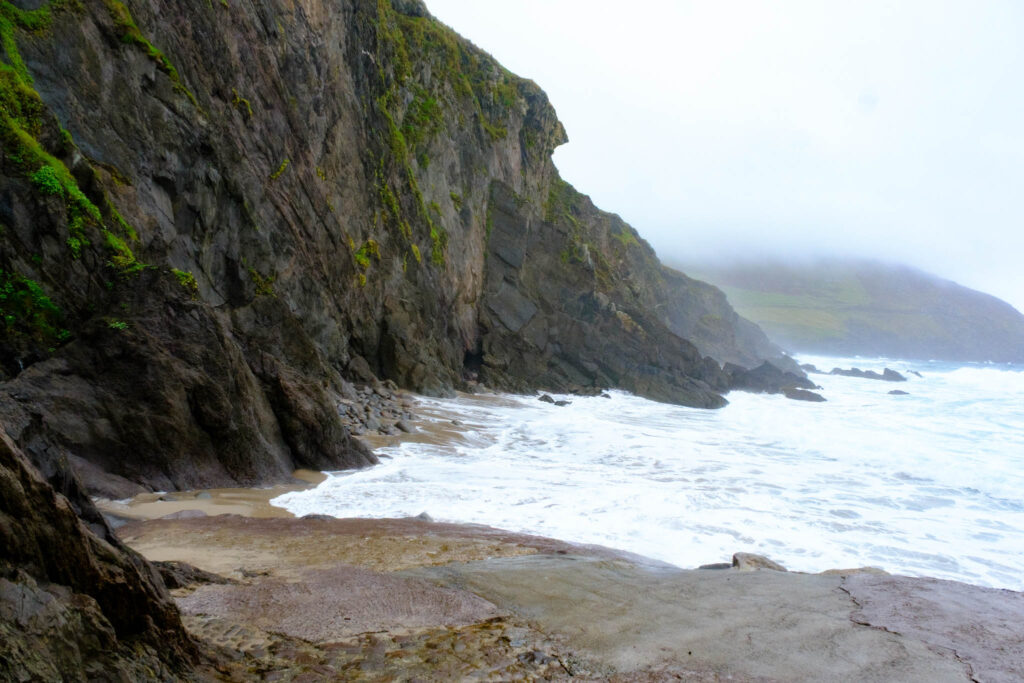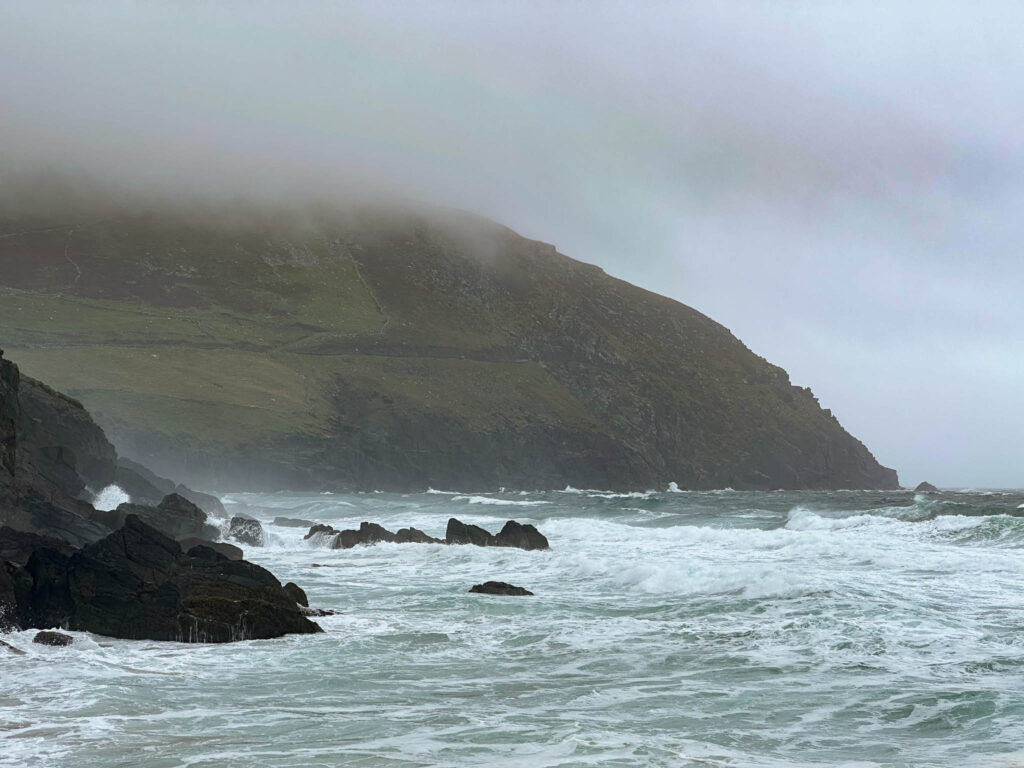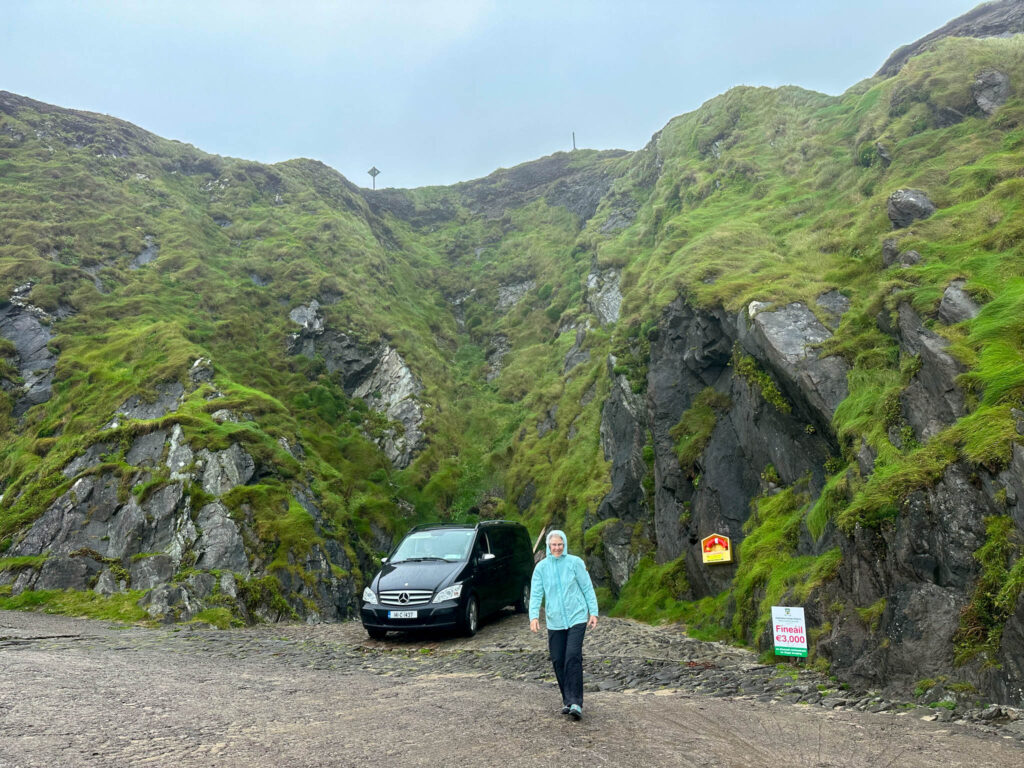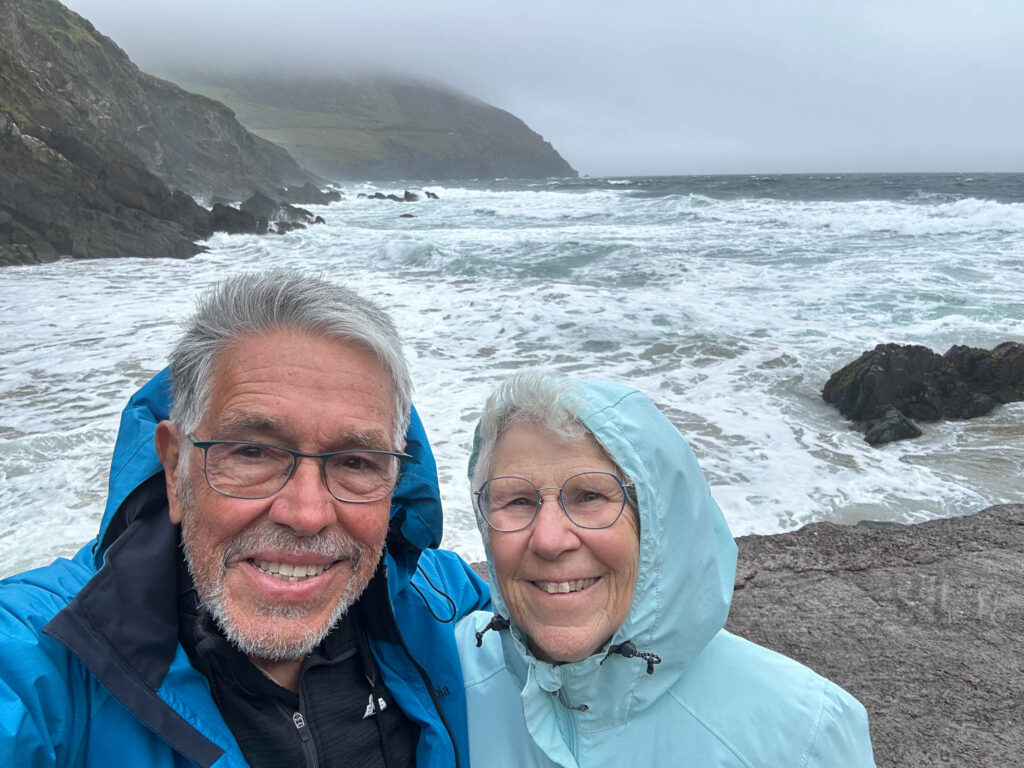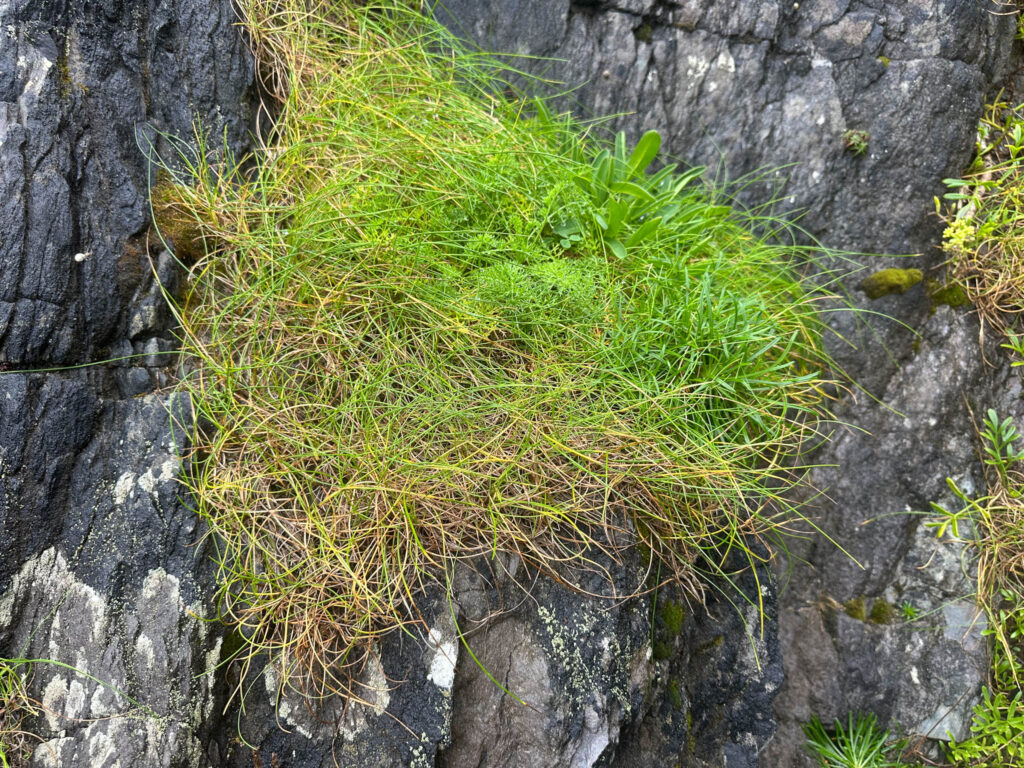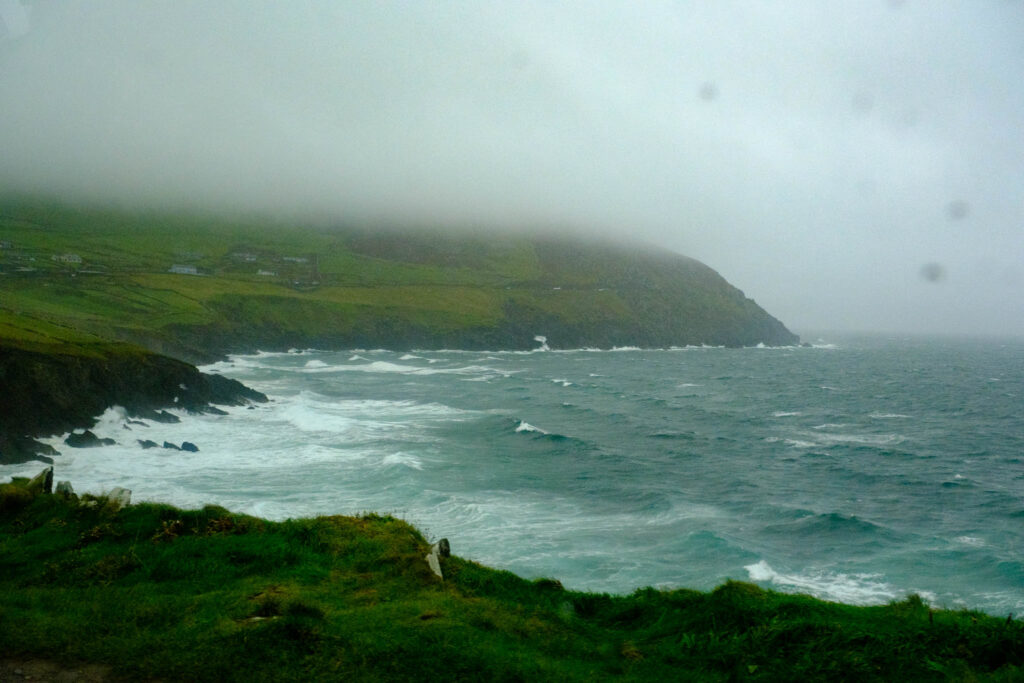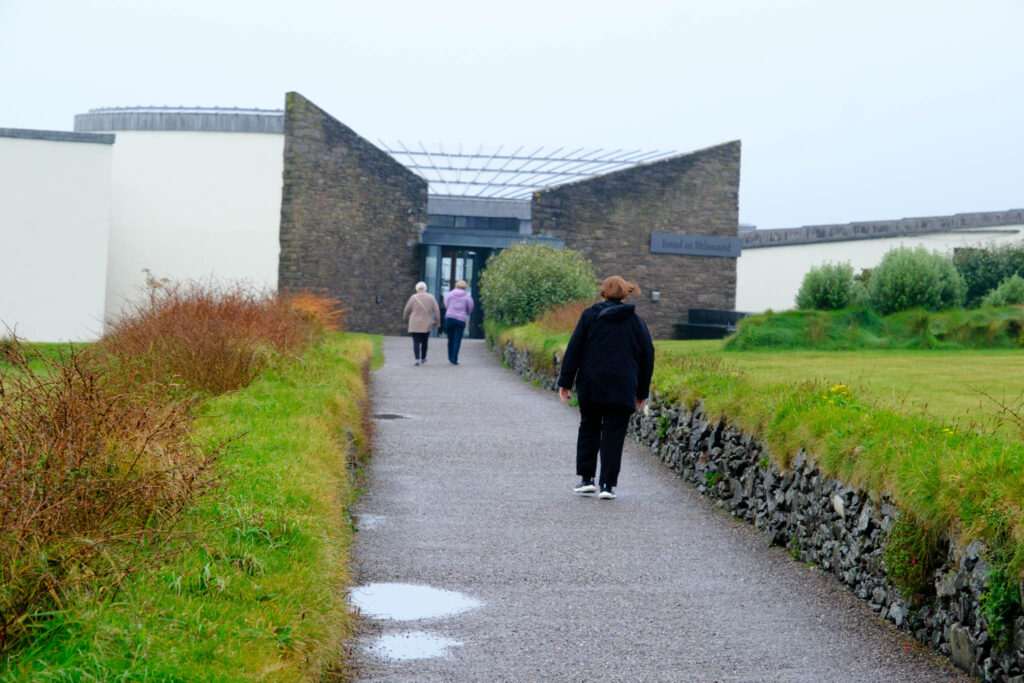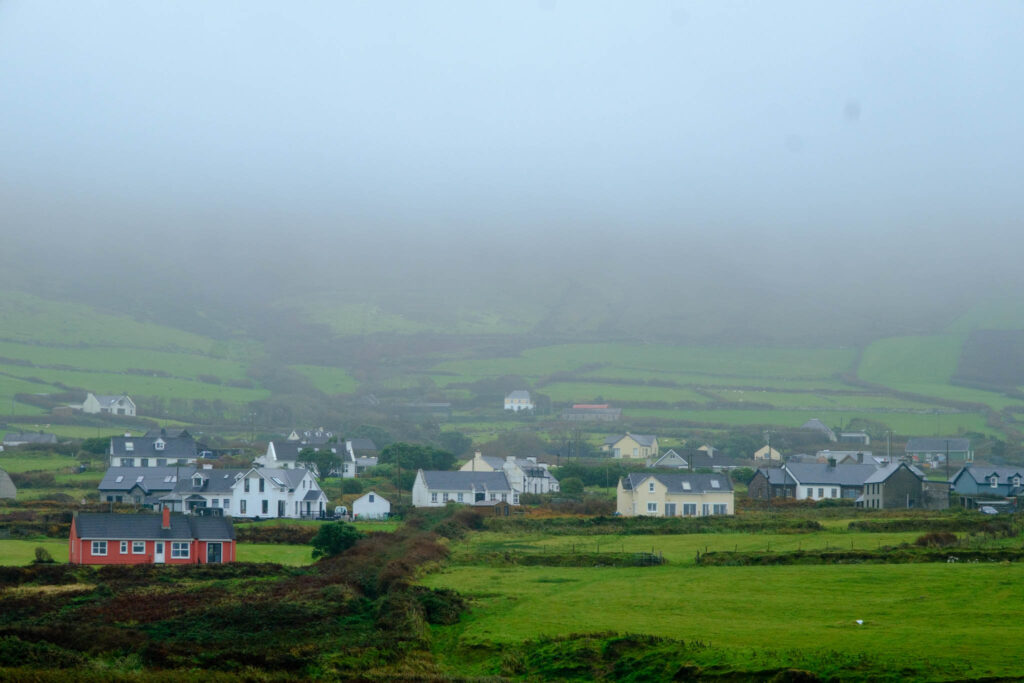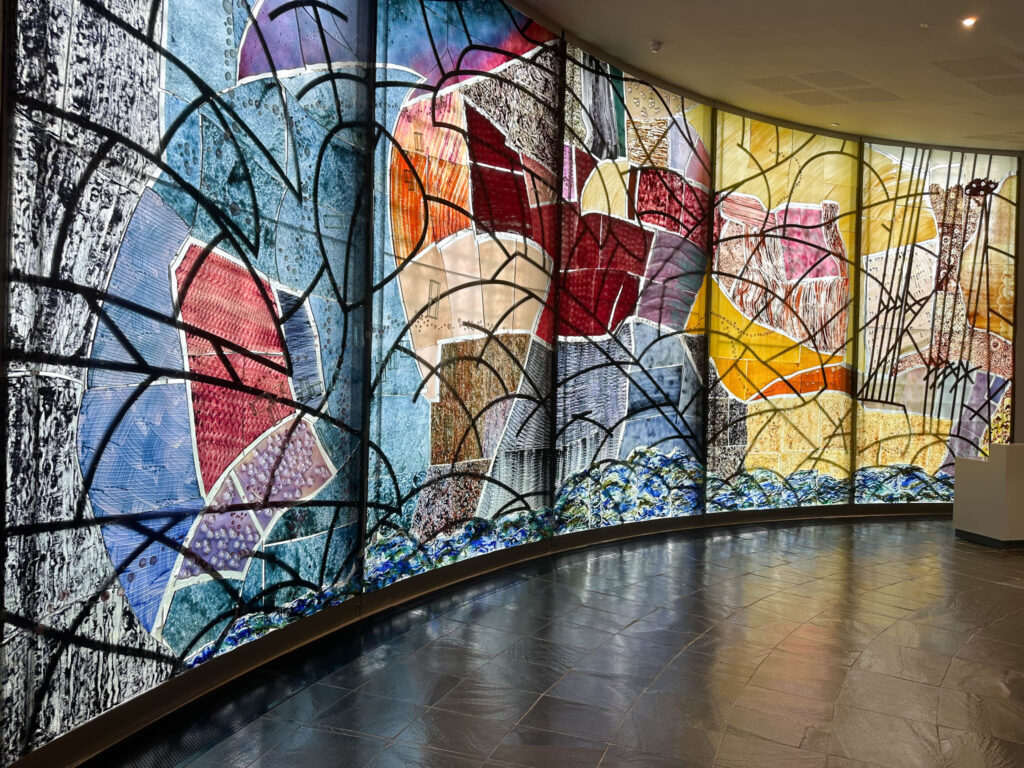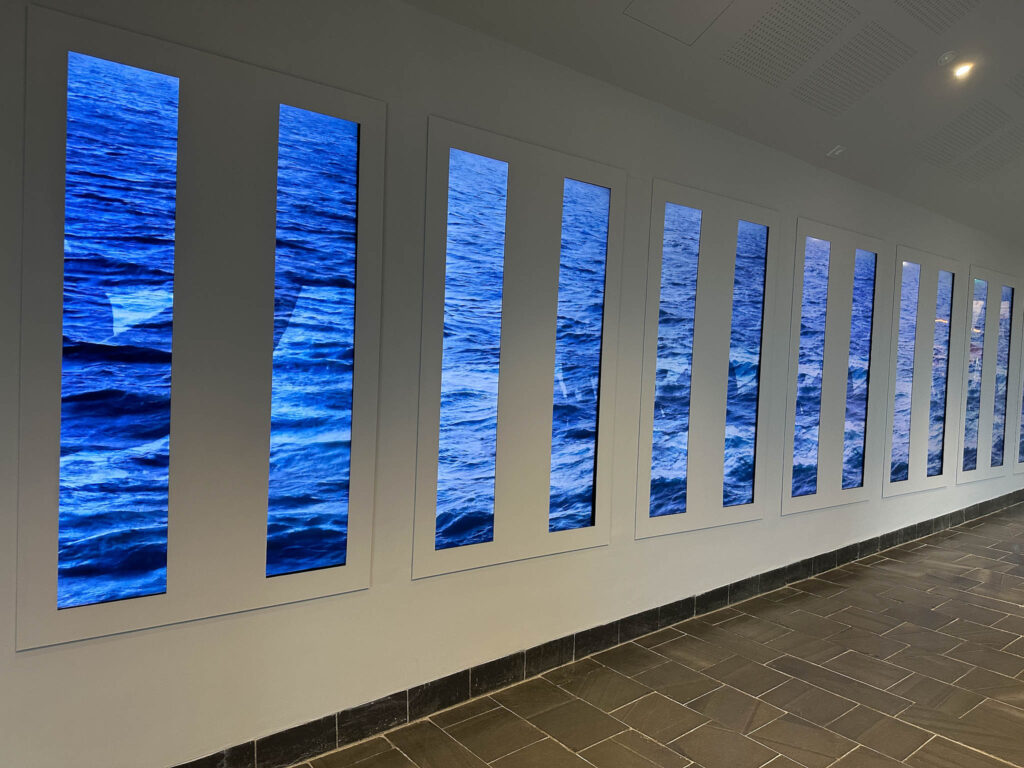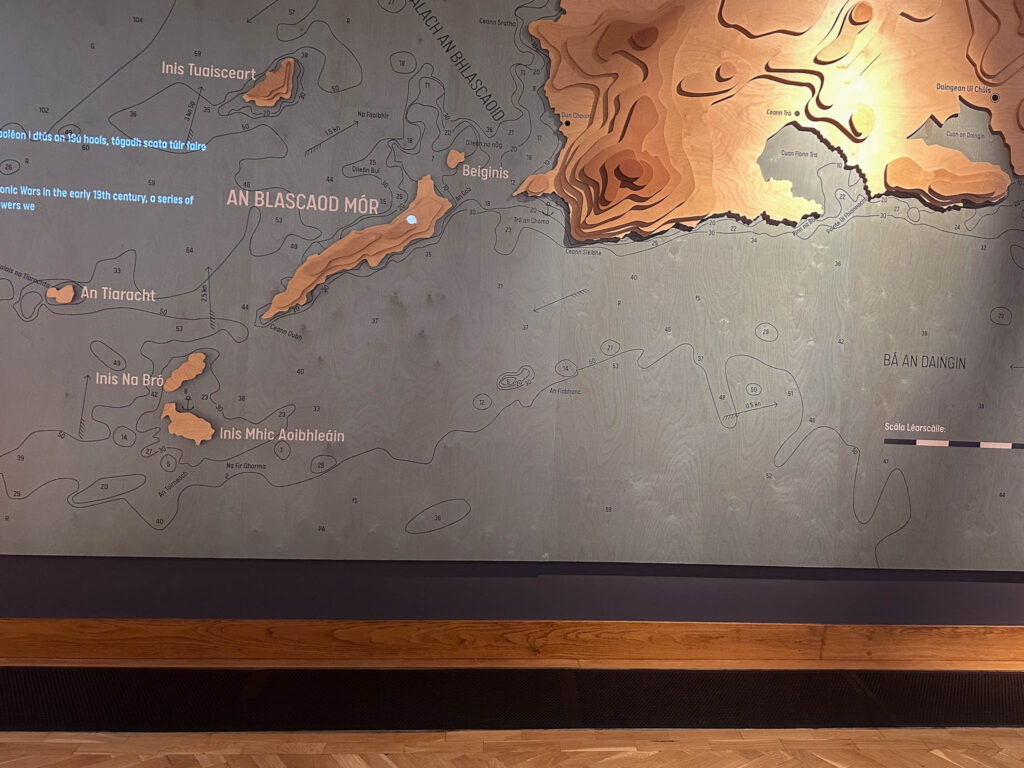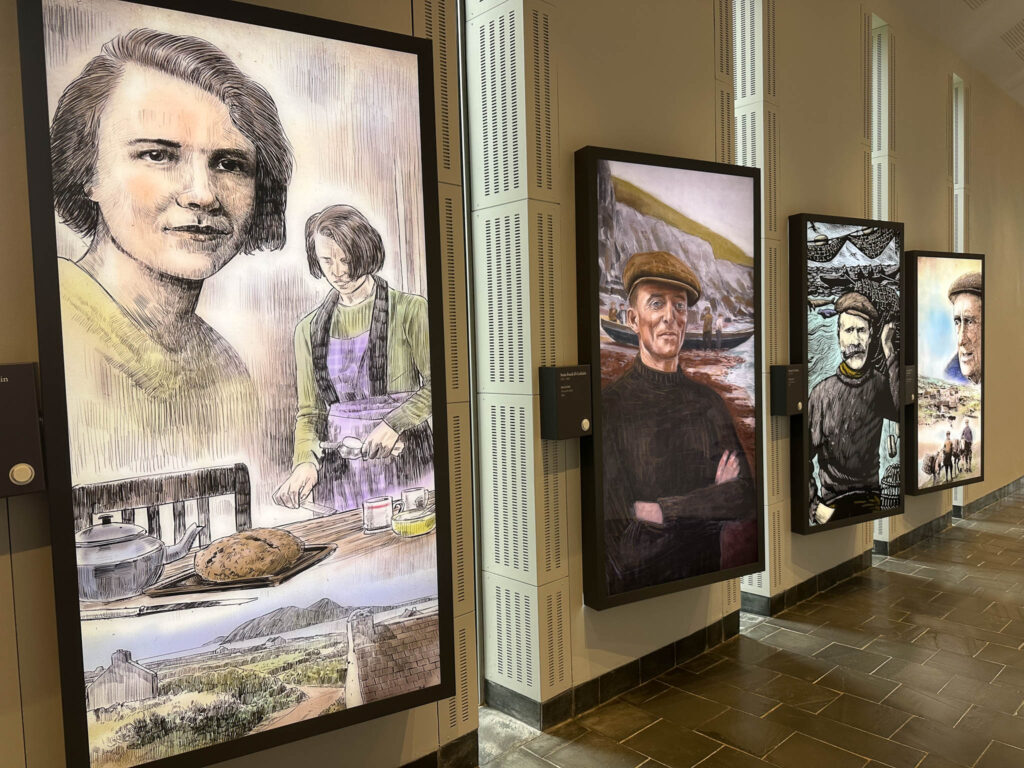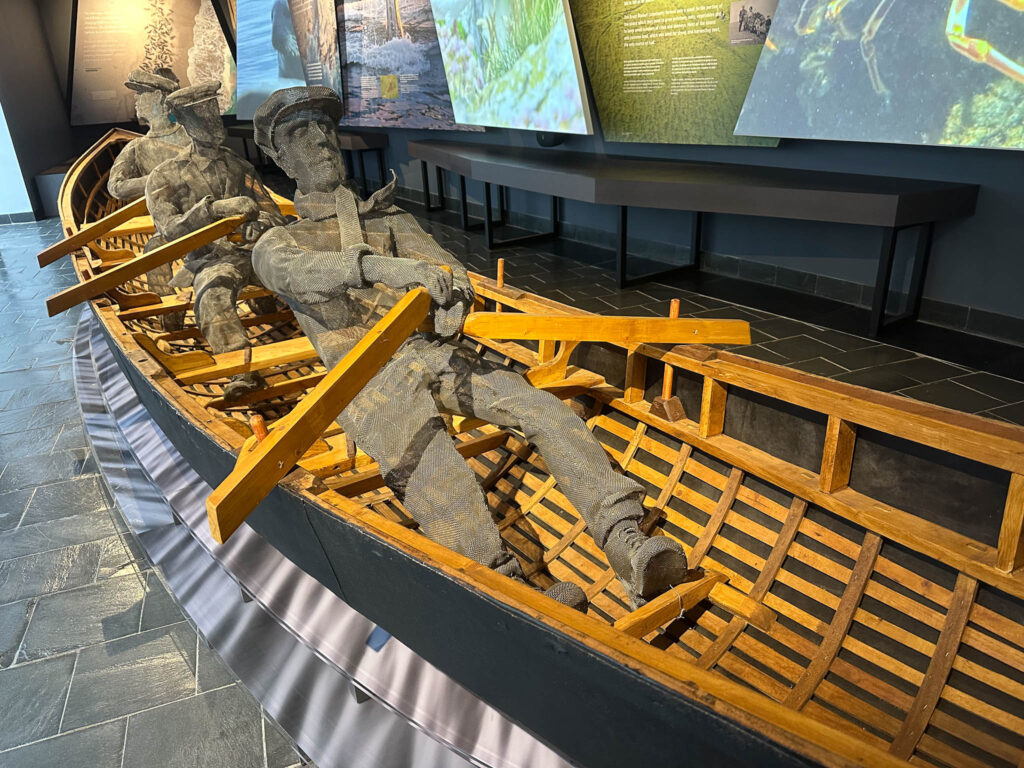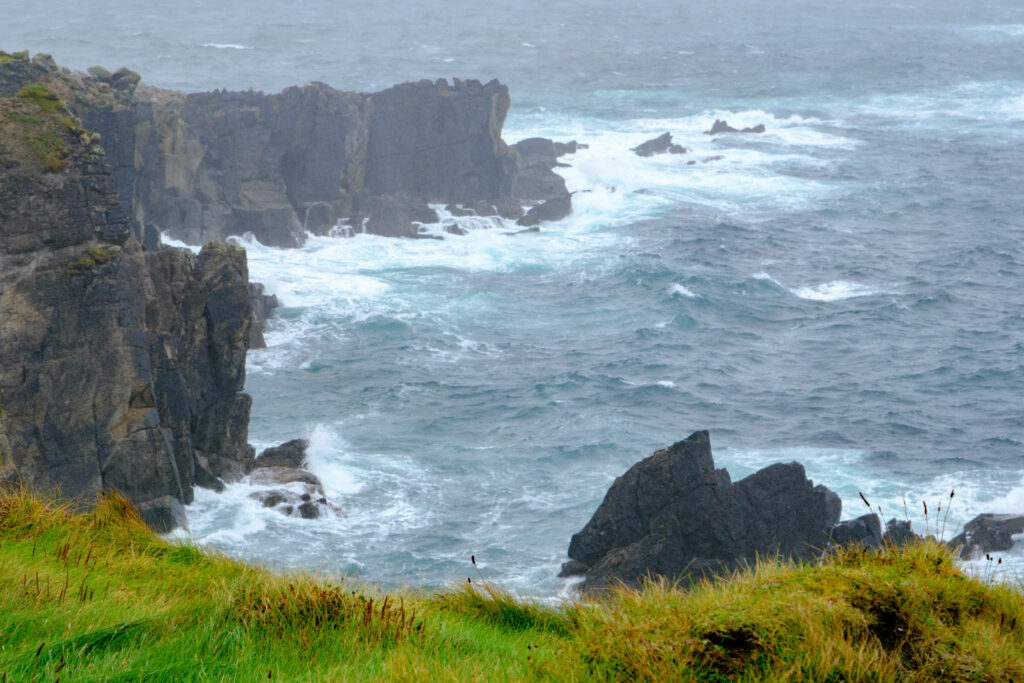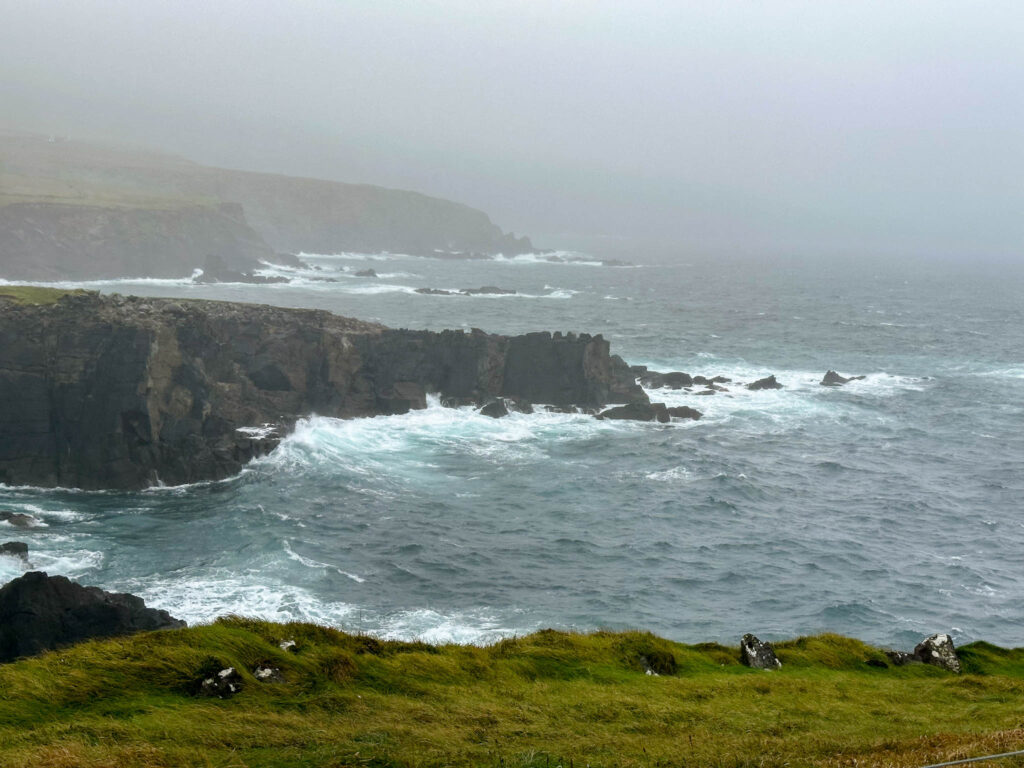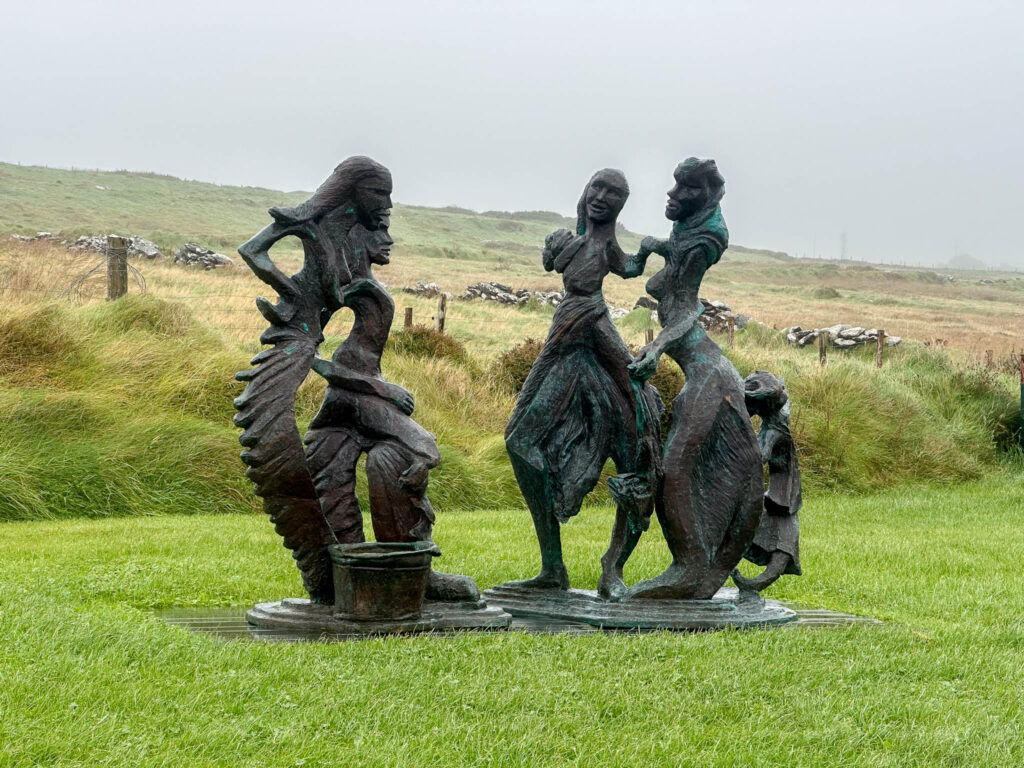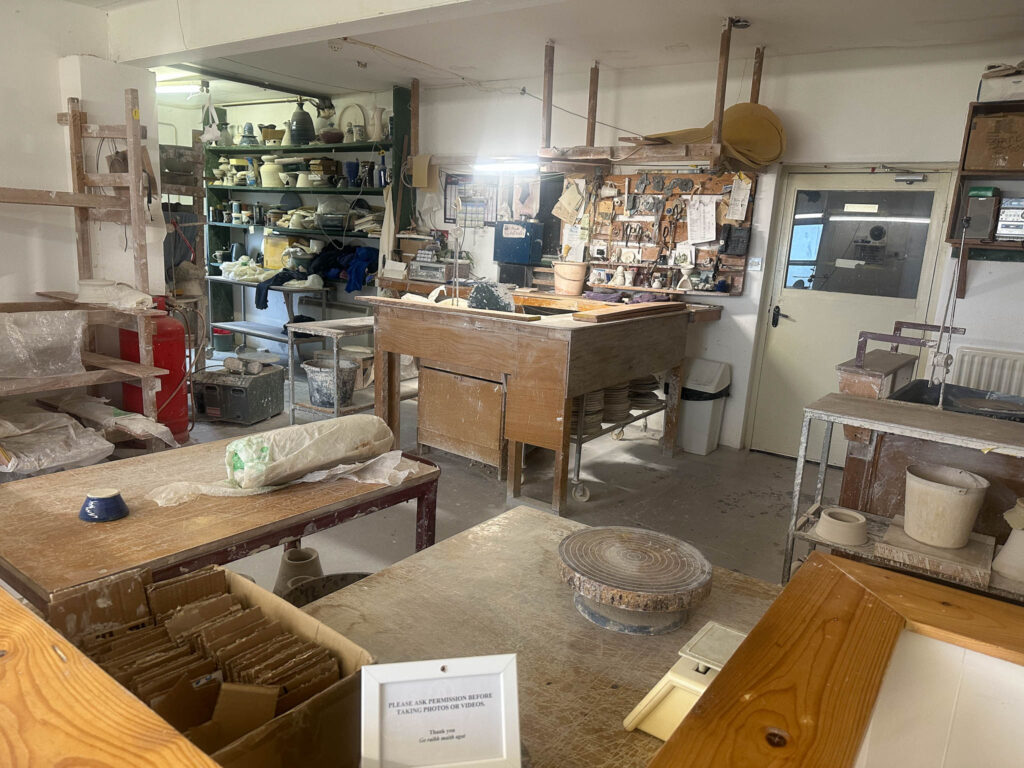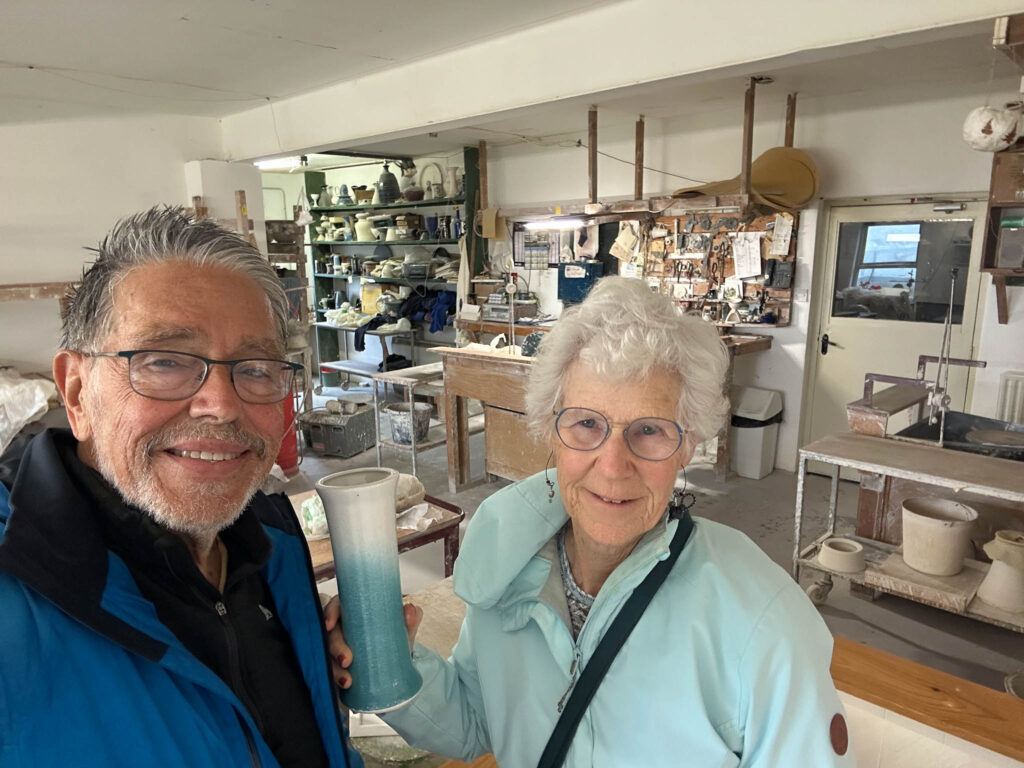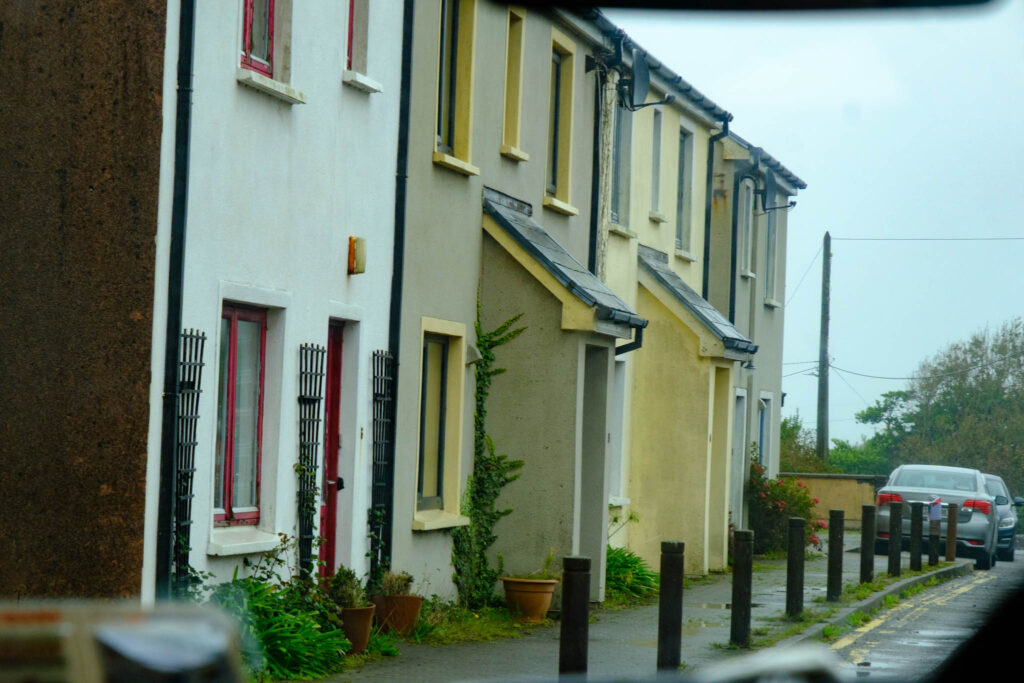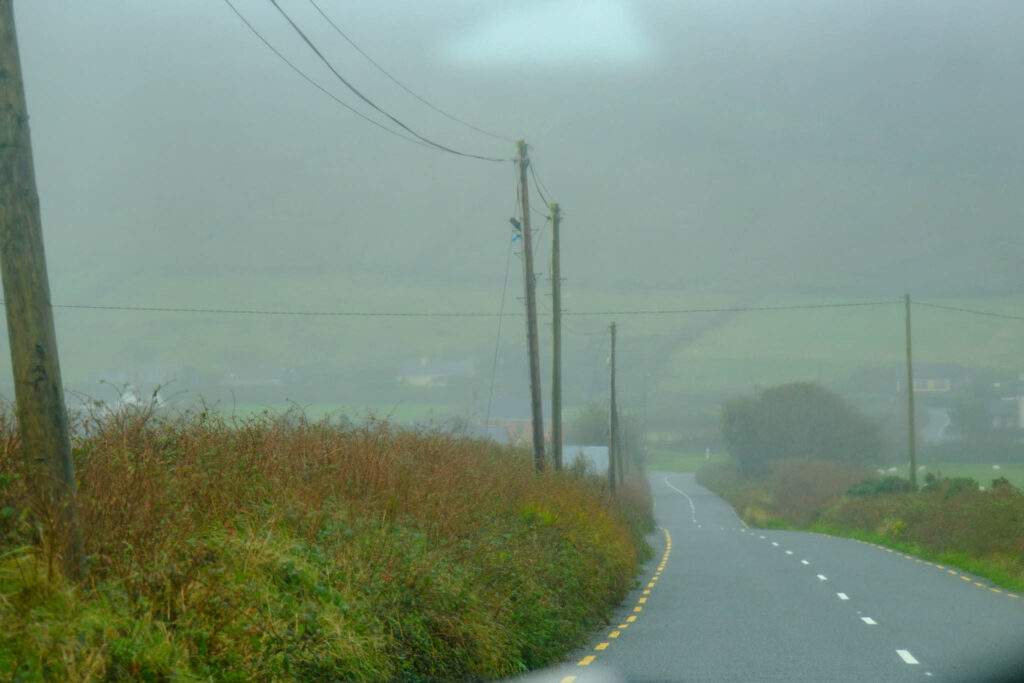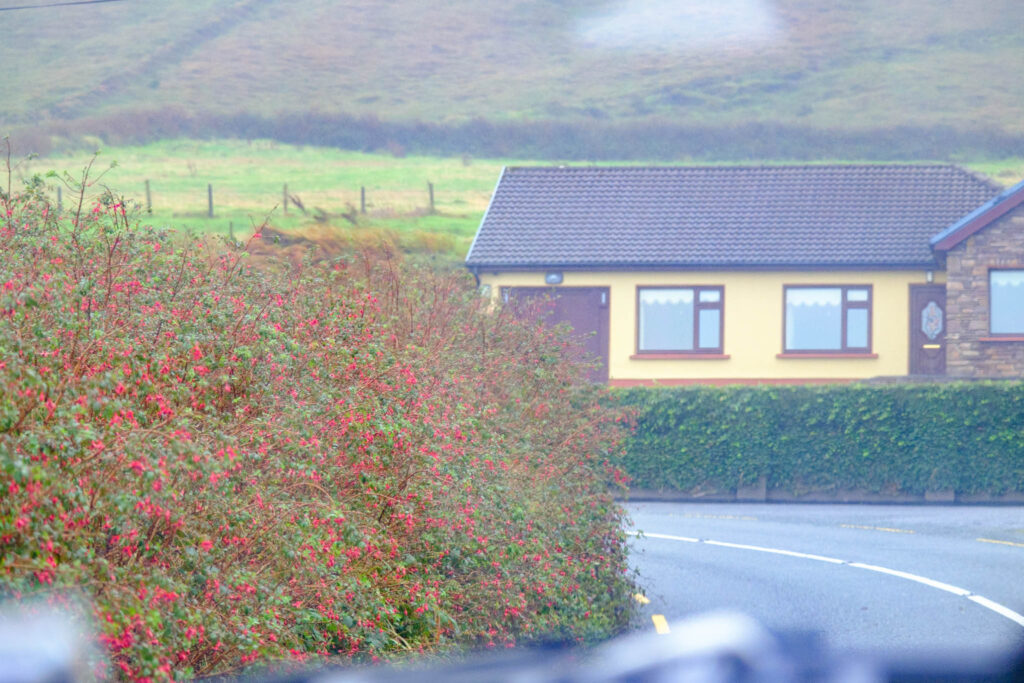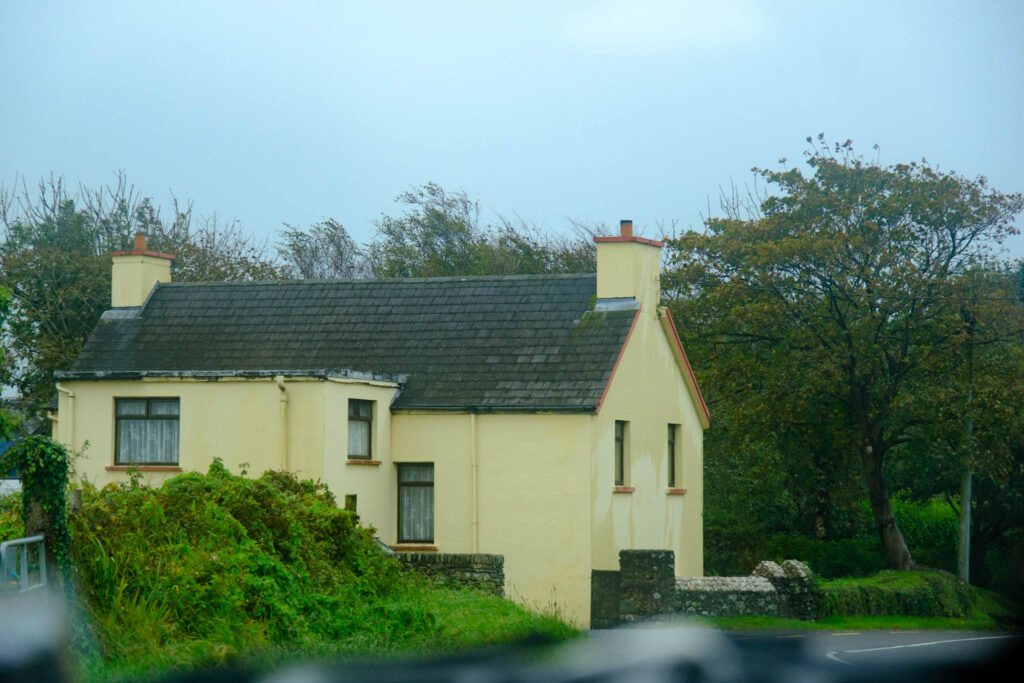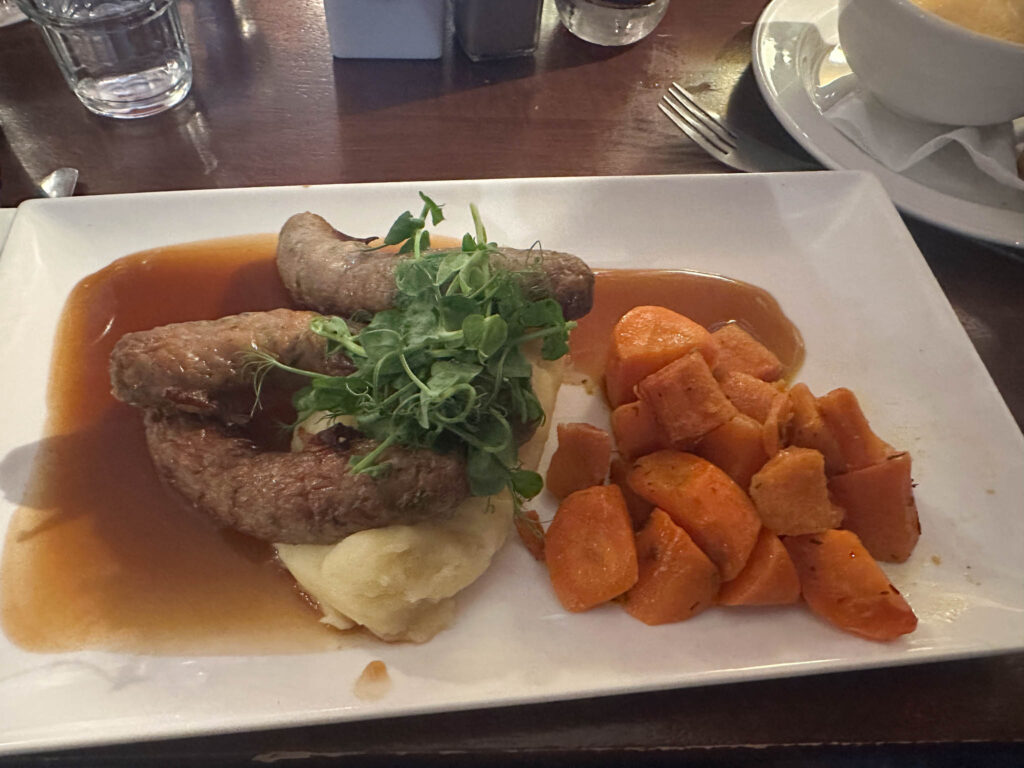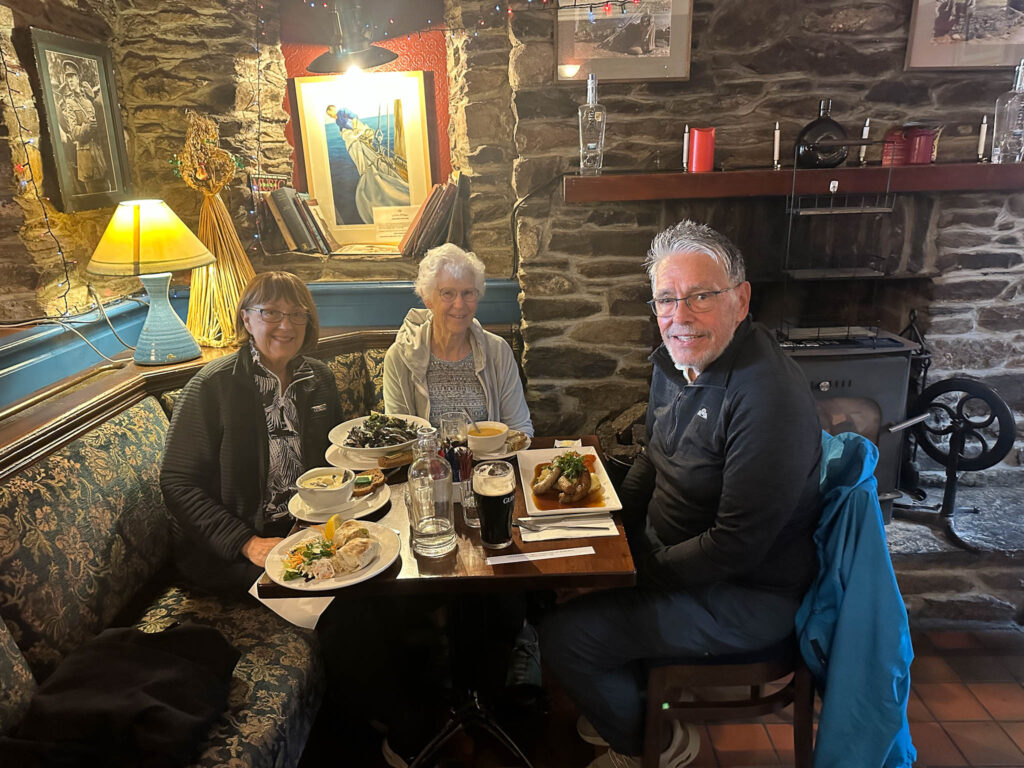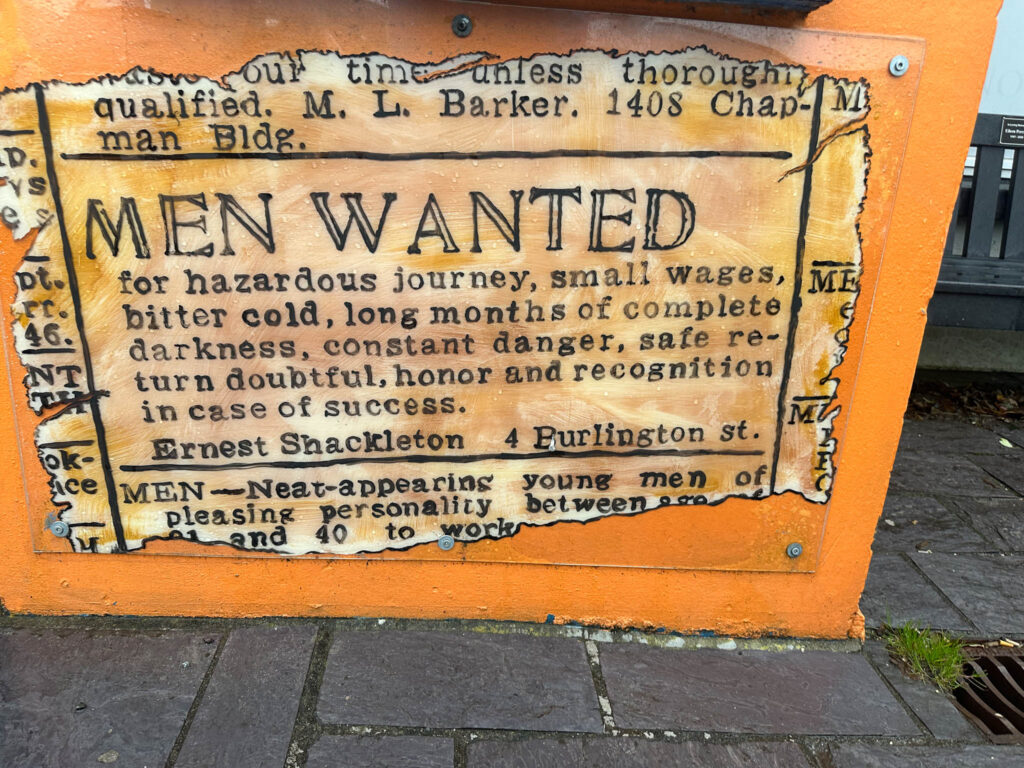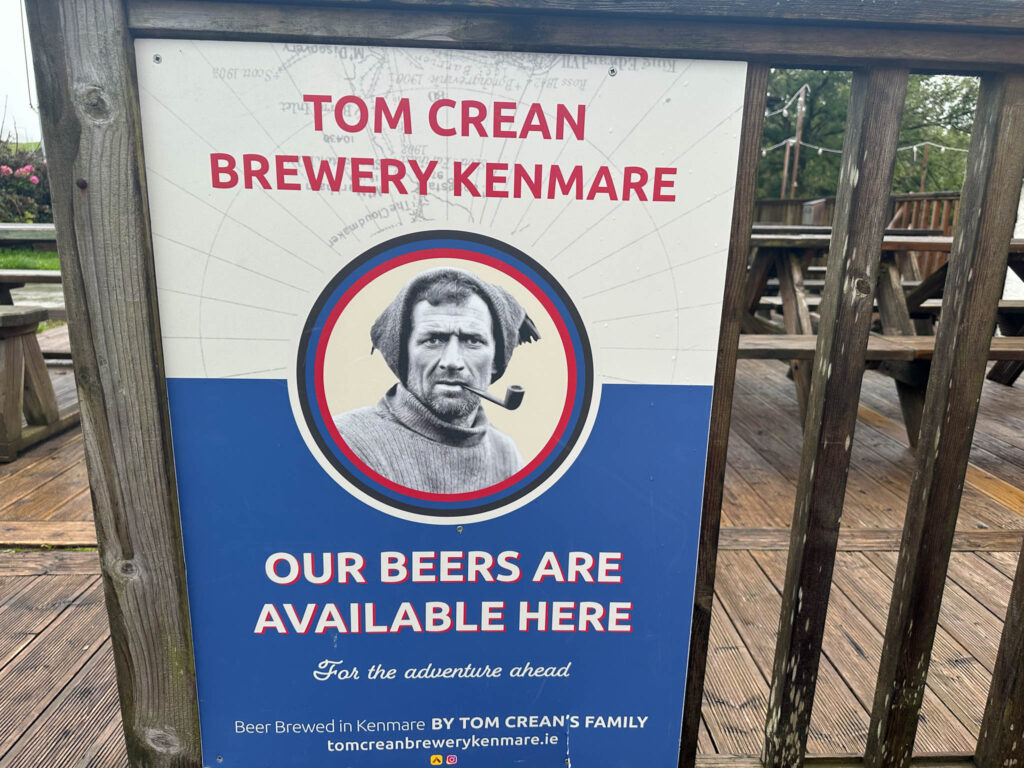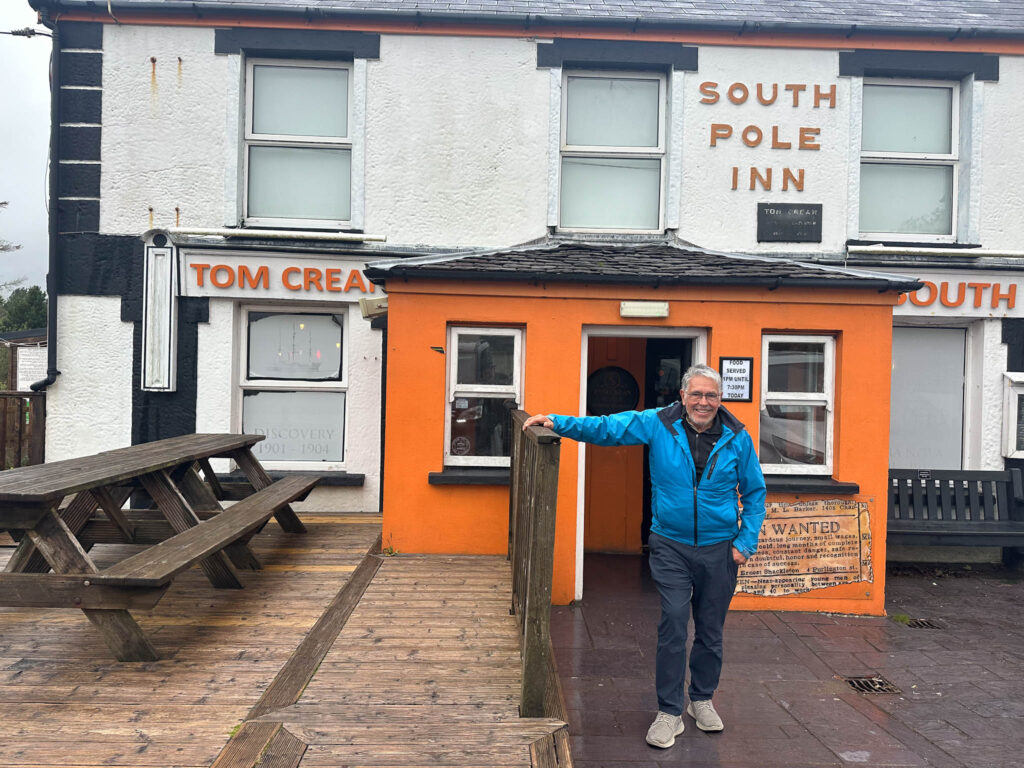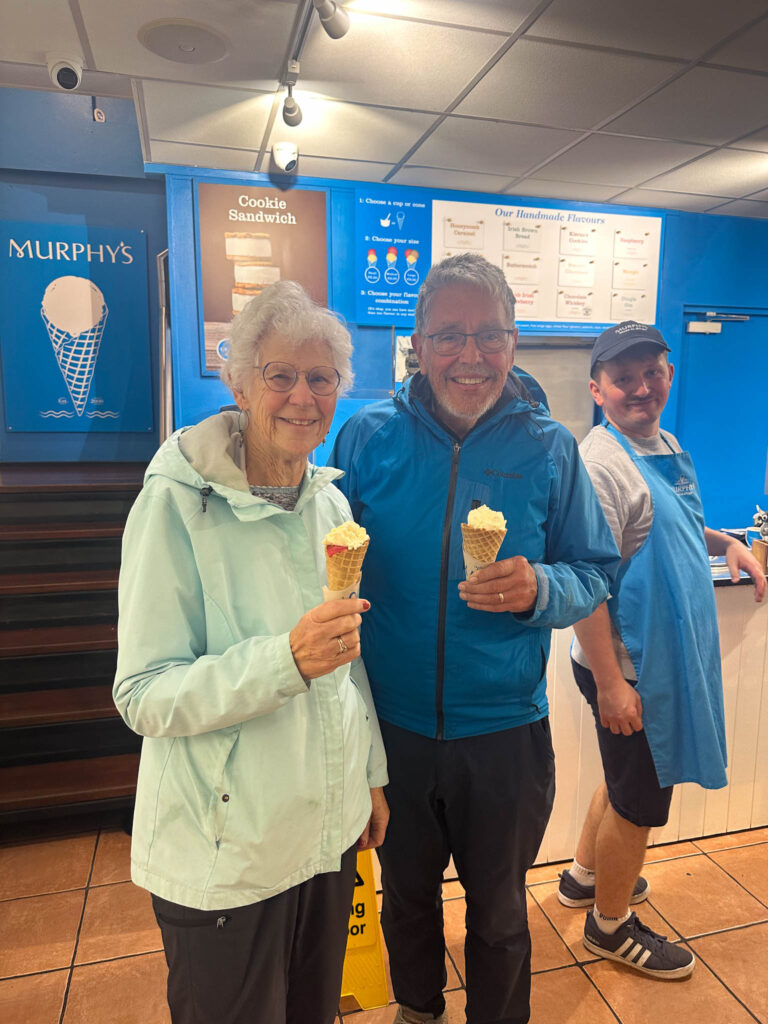Today we saw a statue of the Wild Colonial Boy, the subject of a ballad about Jack Doolan, a sixteen-year-old lad from Castlemaine, Ireland. He was convicted of a petty crime, like stealing a loaf of bread, and was sentenced to exile in Australia. He became a Bushranger, stealing from the rich and living a life on the run until gunned down by the British police.
We drove through Castlemaine today and the weather could be described as Wild Irish Rain. Windy, cool and almost continual rain. We’ve had days with occasional showers and drizzle. This was a rainy day from start to finish. Too bad, in a way, because the Dingle Peninsula is one of the most picturesque sections of Ireland. It lies to the west of the Kerry Peninsula where we were yesterday.
But the rainy, cloudy and windy weather gave us a view of Dingle that had its own character – wild and fog bound. See the pictures.
Outside hiking and sightseeing was limited, permitting only drive-by photo ops for what would otherwise would have been exploration on foot. One such site was Cashel Murphy, a dry-stone structure said to date as early as 3200 BC and used through the pre Christian era. It supported maybe five extended families and their livestock within a circular stone structure, much like the ring fort we saw yesterday. This one, however, was not built for defense but as a living space.
On the way out of town we drove through the Killarney Golf and Fish Club, six-time host to the Irish Open. Two golfers were accompanied on the faraway by five Sika deer.
Inch beach is a nice three-mile sand dune we saw from the car. Care for a dip? No thanks, not today. A couple of surfers weren’t afraid of getting wet though.
Dingle is the main town on the peninsula, a cute touristy town but far from Killarney in that respect. Rick Steves recommends Dingle over Killarney and the Kerry Peninsula. I could see spending a week exploring and hiking this area.
We had a pastry and latte to tide us over and Nancy did some jewelry shopping. We stuck our heads in the Dingle Glass store, but deferred any purchase decisions until our visit to the factory just outside of town.
Sean, the master glass worker and owner, demonstrated glass etching. He trained at Waterford Crystal, but he along with most others lost their skilled jobs when Waterford moved their production to China. Sean set out on his own, creating eight designs. Two that intrigued us were one that depicts the Irish harp on one side and the fascia flower on the other. Another design was taken from an Irish Ogham stone. These rune-like stones scattered around Ireland and especially County Kerry, date from the Celtic pre-Christian era.
I’m always interested in dwellings when we travel – ancient ones and modern. I like to guess at what living in a place must be like. On the modern end are neat, newish houses painted in bright colors that dot the landscape. David calls them the “bungalowisation” of Ireland. Today we saw stone houses (walls and roof made of stone). We also saw single room Famine Houses that housed the destitute during the Great Famine of the 1840s. And there were the aforementioned dry stone structure and the similar beehive structures from early times.
Speaking of the Great Famine, David related that landlords in this region were notorious for letting the Irish die by the side of the road from starvation, despite the fact that food stuffs were being exported at the same time. Those Irish who continued to work for the landlord were told that if they assisted the starving they would lose their jobs. David’s grandmother would look down at her feet in shame, knowing that her grandparents survived by ignoring the plight of their neighbors.
David drove us down to Coomeenoole Beach, and when I say “down” I mean down. All other tourists parked up the hill and walked down a steep, narrow, twisty path. Not David. He took great pleasure in scaring us with a drive he’s done many times in the past. The view of the cliffs and crashing waves was worth the trip.
We visited the Great Blasket Island Center, a recently-redone and well done interpretive center for life on the island from as early as the 1700s until 1954. It was a small community of at most 160 people living on fishing and some potato farming. Life was isolated with no medical facilities, church and only a small school. Increasingly, people migrated off the island to, in many instances, to Springfield MA and Hartford CN. A number of authors have written books describing life on the island.
Next, a pottery factory. We bought a vase.
Back in Dingle we had our meal for the day, not counting the pastry earlier nor the up-coming bedtime ice cream run. Small, sweet local mussels for Judy, a seafood wrap for Nancy and a sausage on mashed potato concoction for me. I’d have called it a bangers and mash dish but Guinness Sausage on Mashed Potatoes sounds classier, I guess. Maybe that term is too British for the Irish.
One final stop: at a pub named after Tom Crean, one of the heroes of Ernest Shackleton’s rescue mission. He made three Antarctic expeditions, two with Scott, including the second where Scott perished. Crean walked 36 miles across the Ross Ice Shelf to rescue Evans, a stranded crew mate.
His third trip was with Shackleton. He was one of the members to sail in an open boat 800 miles to South Georgia Islands to establish a successful rescue mission for those left behind. Crean returned to Ireland, establishing the pub that bears his name. He shrank from the limelight due to the uncertain politics of the Irish war of independence.
And finally, back home for our final night in Killarney. Judy and I made a run to Murphy’s for ice cream. Murphy’s has become a popular ice cream brand throughout Ireland. It’s based in Dingle.
Tomorrow we’re off for Galway up the western coast.
